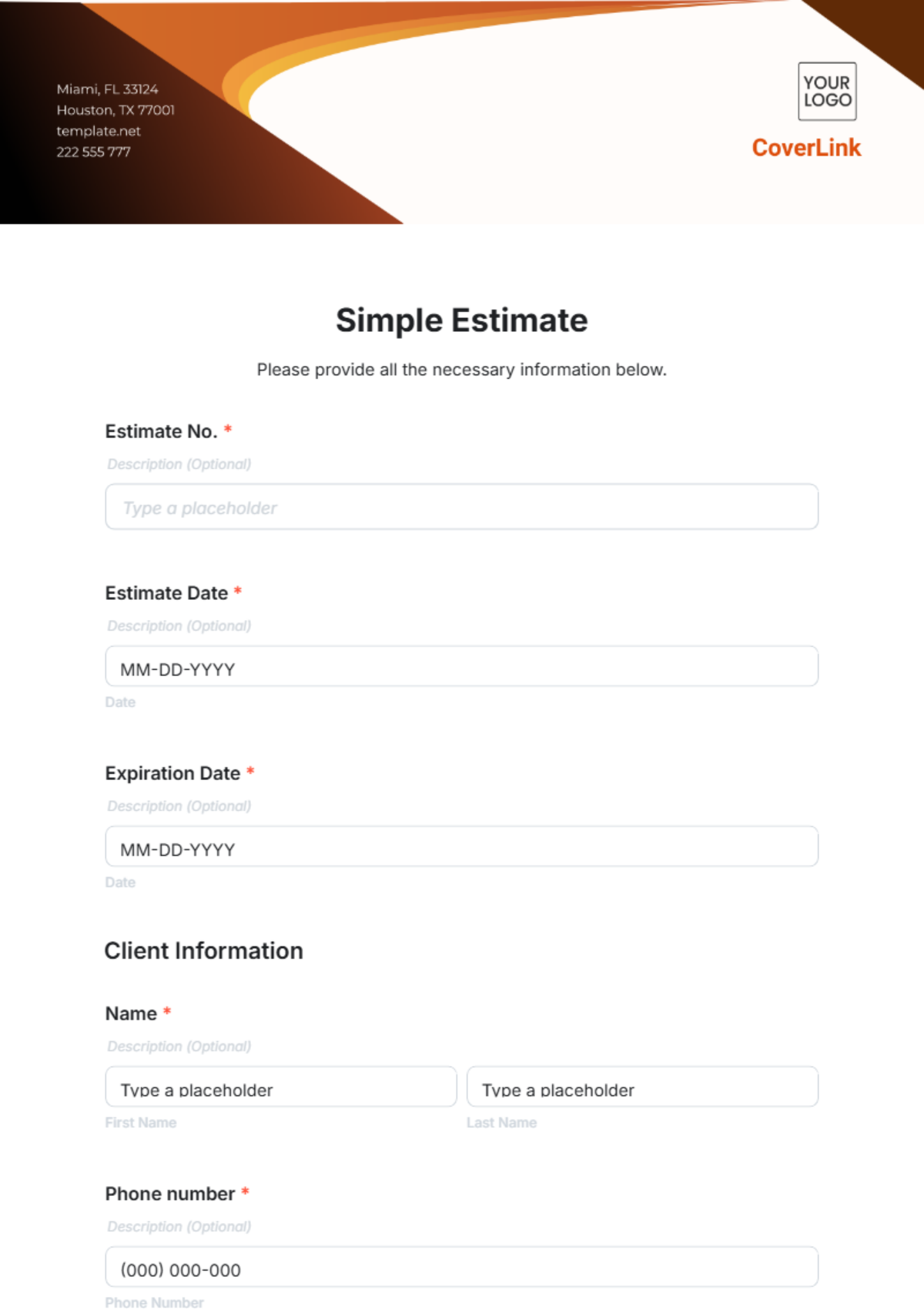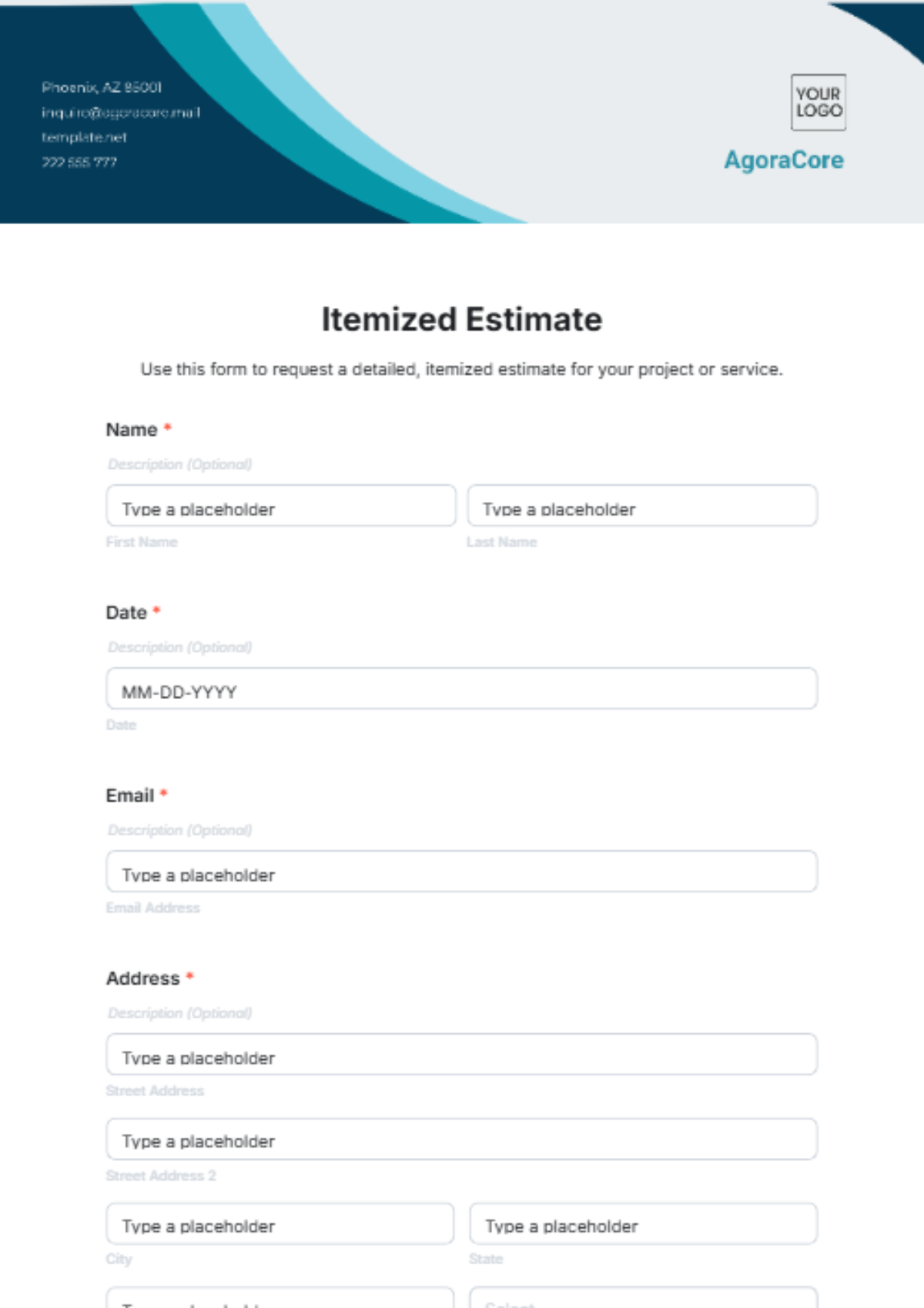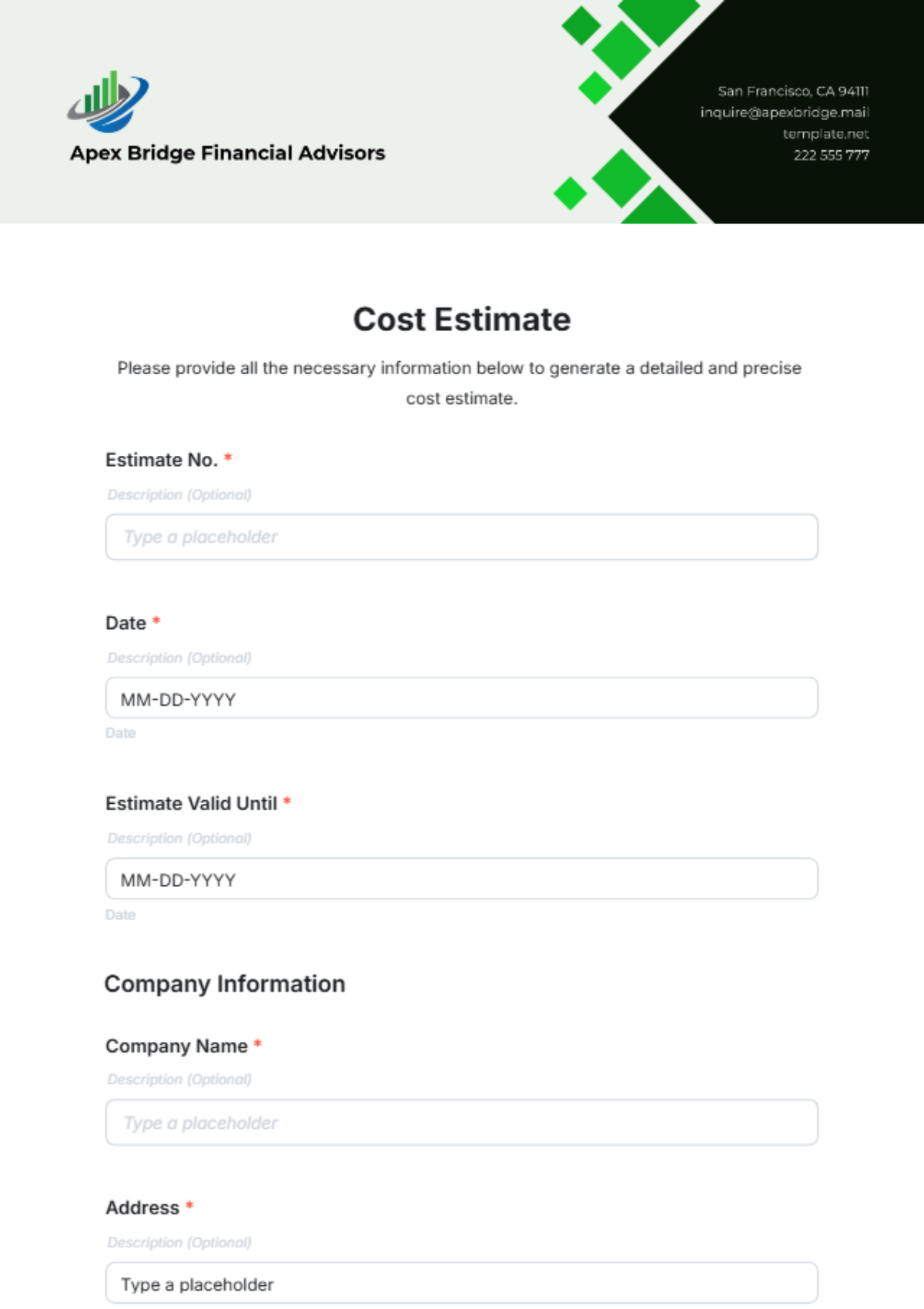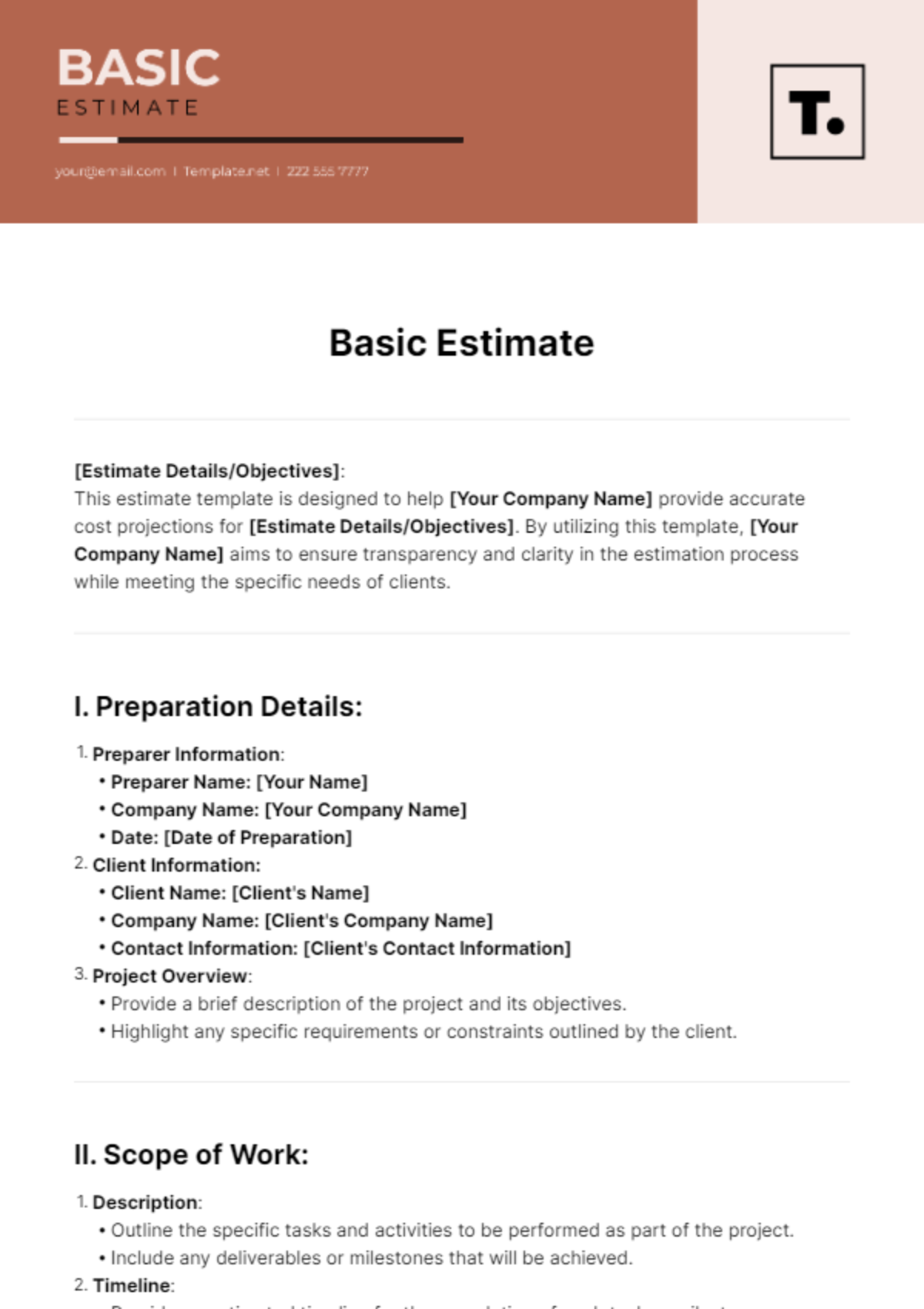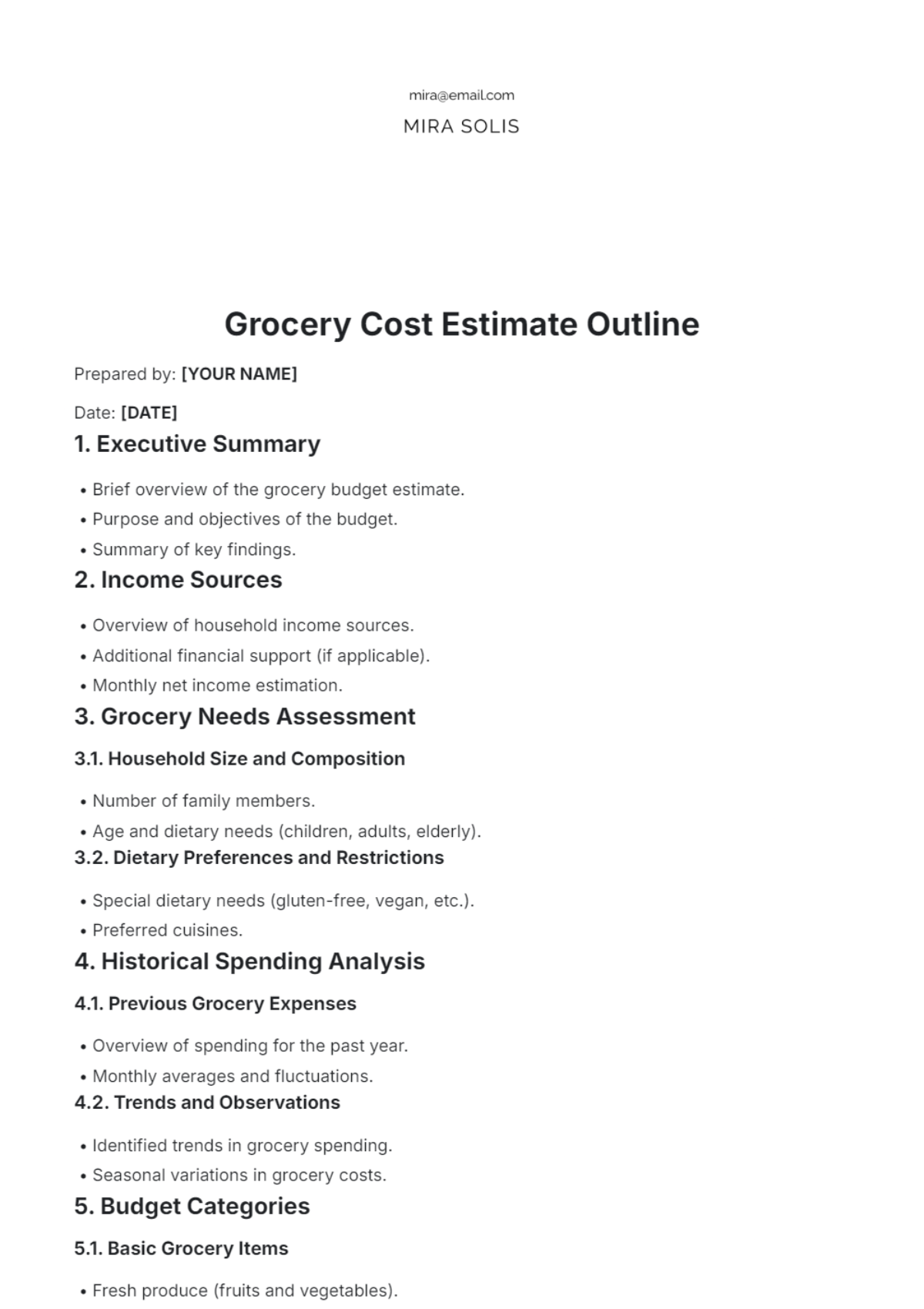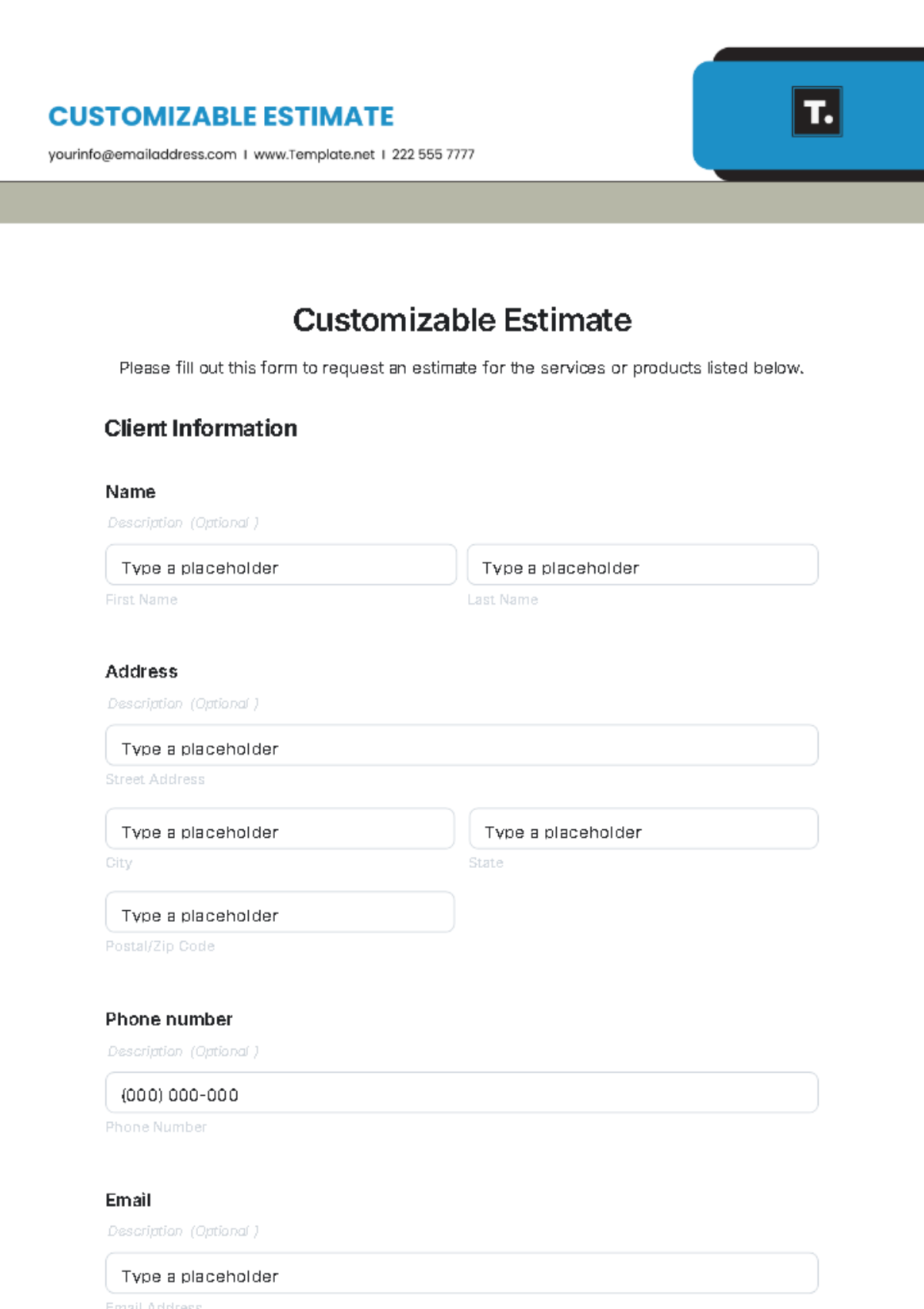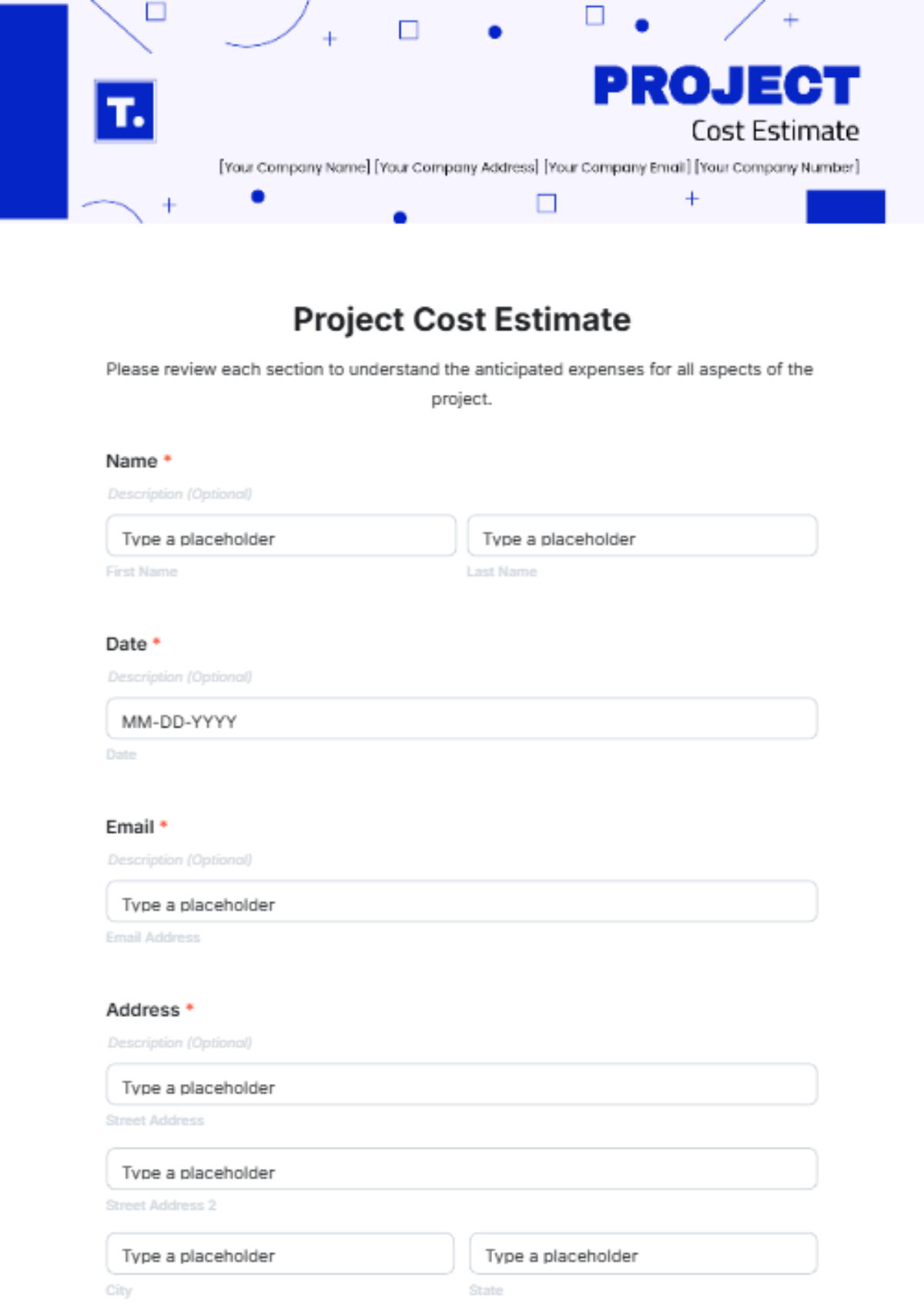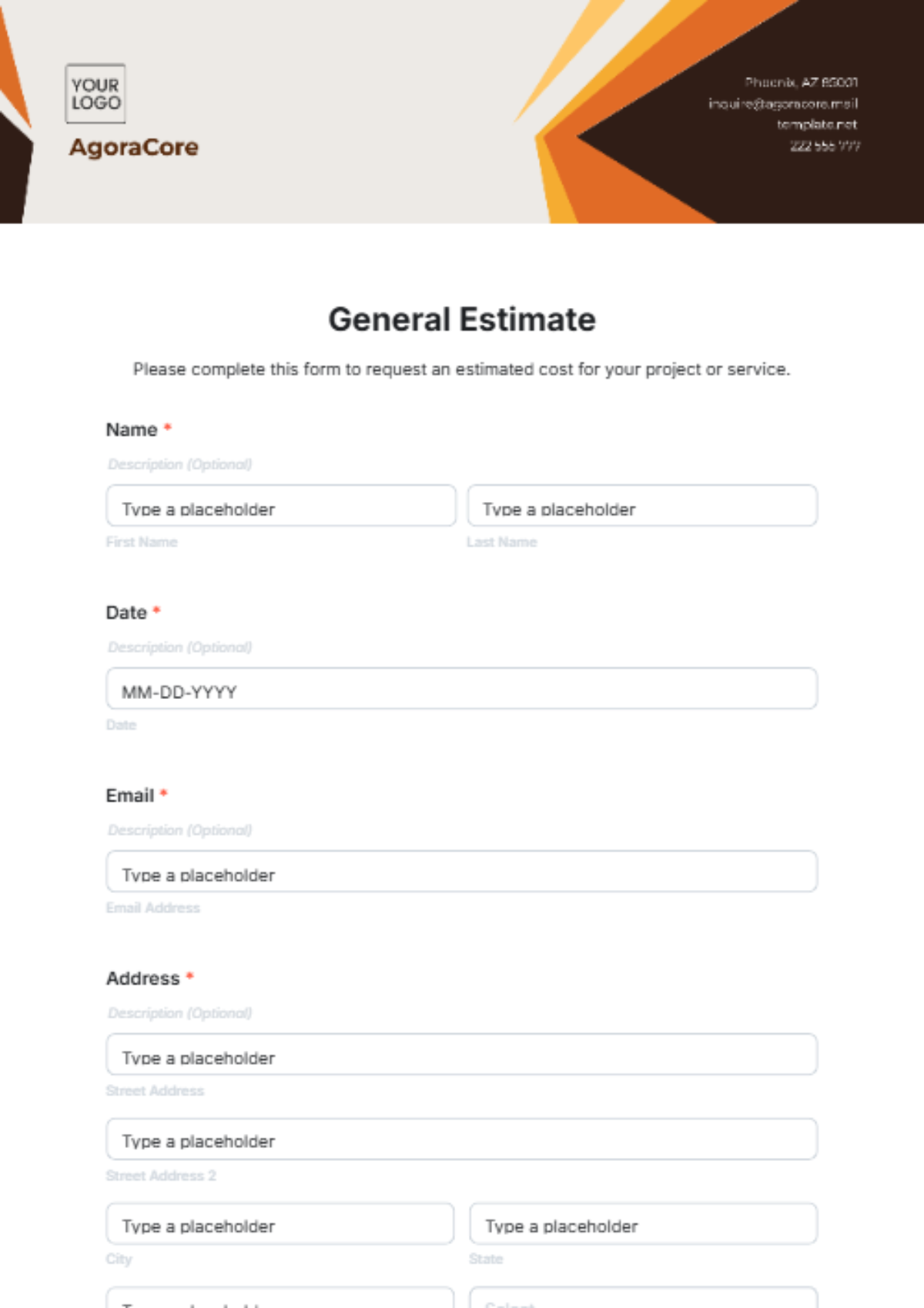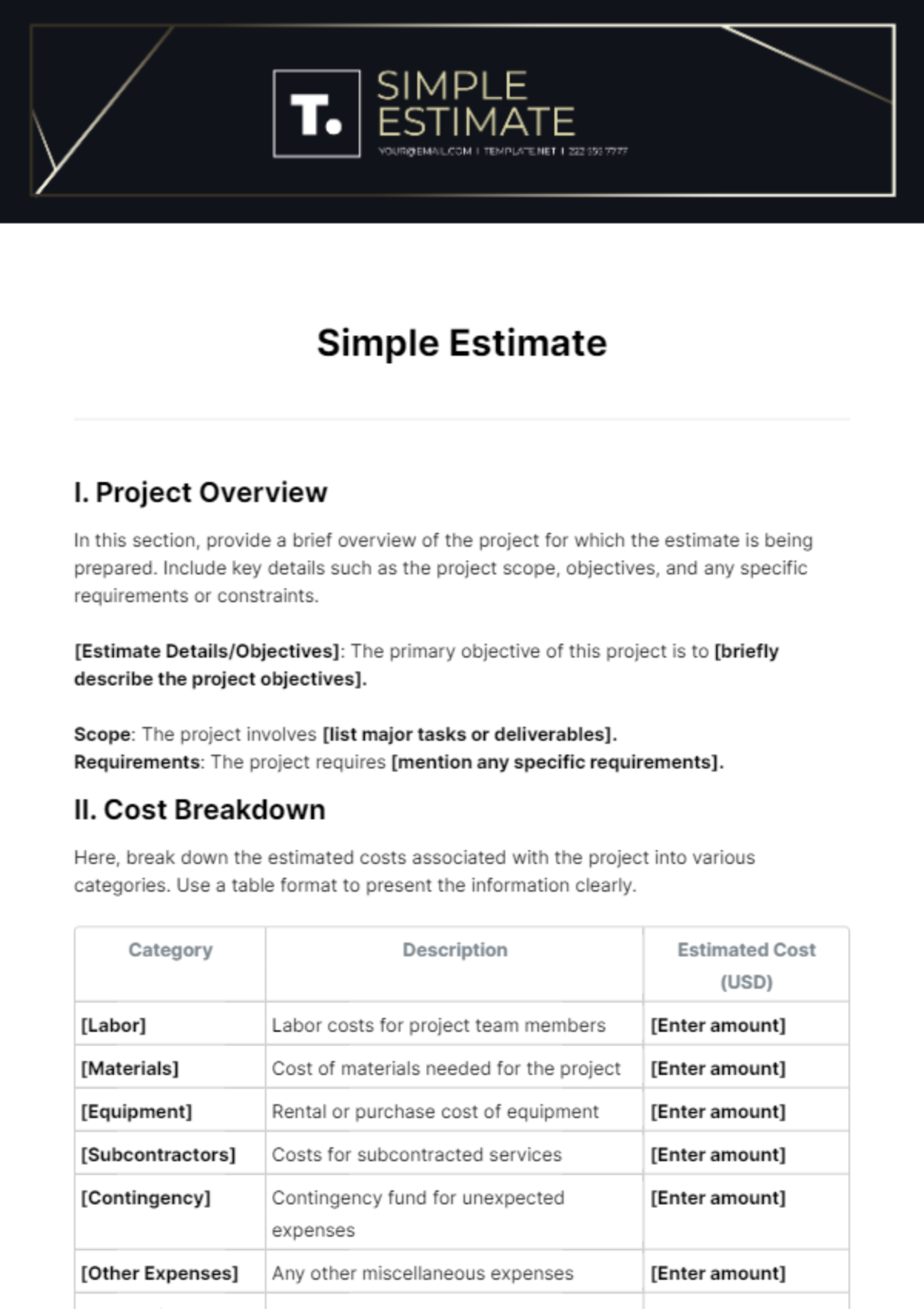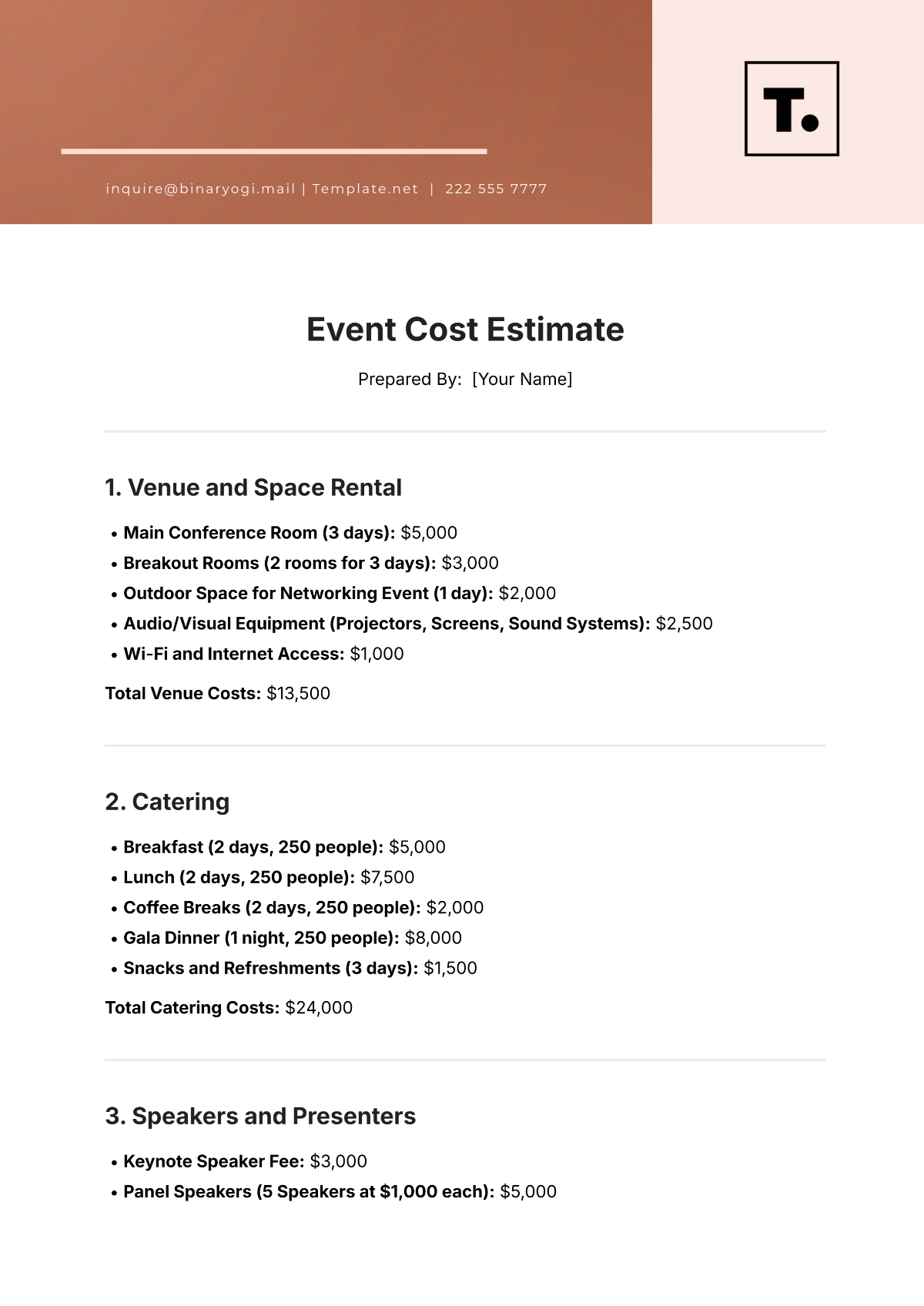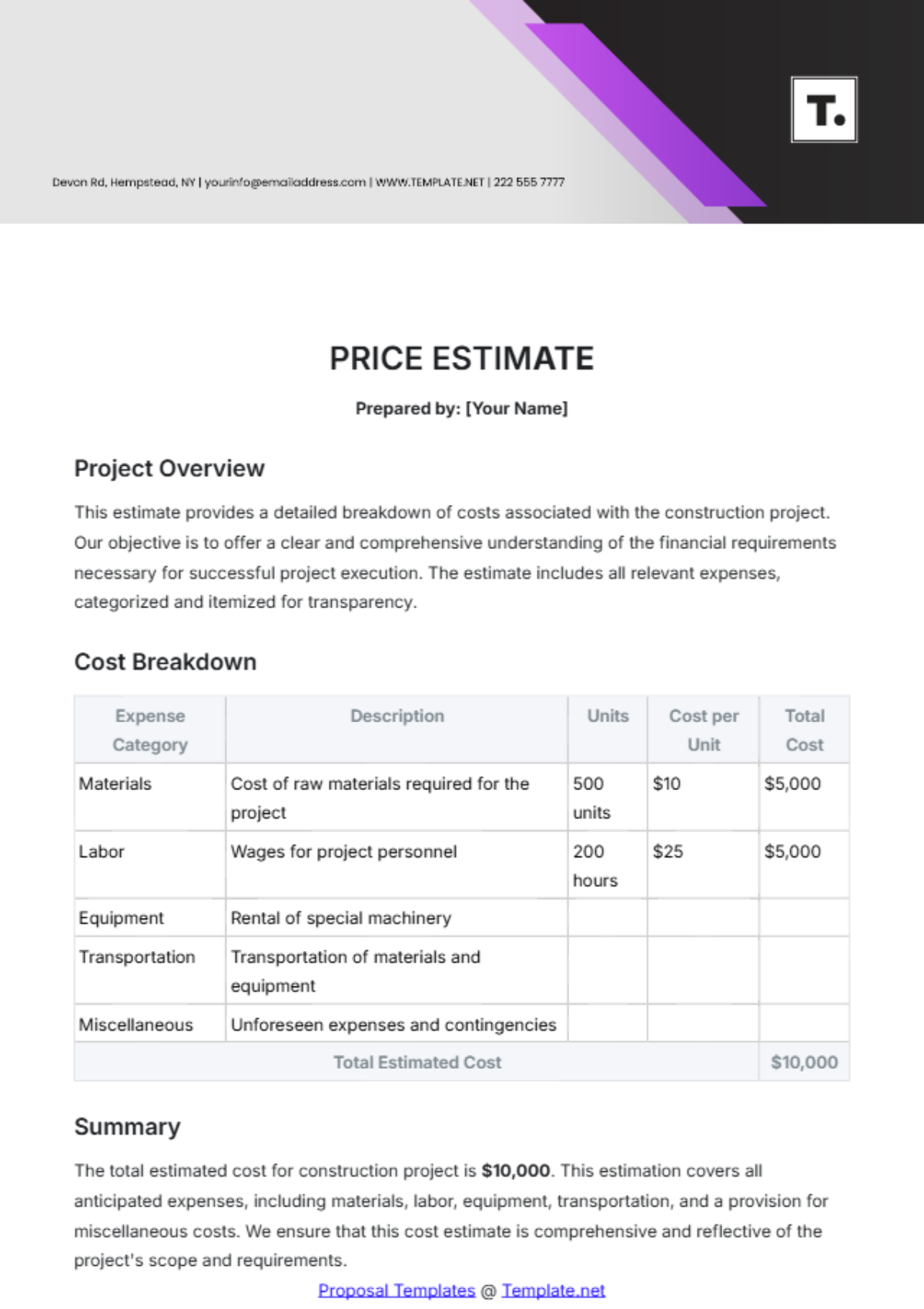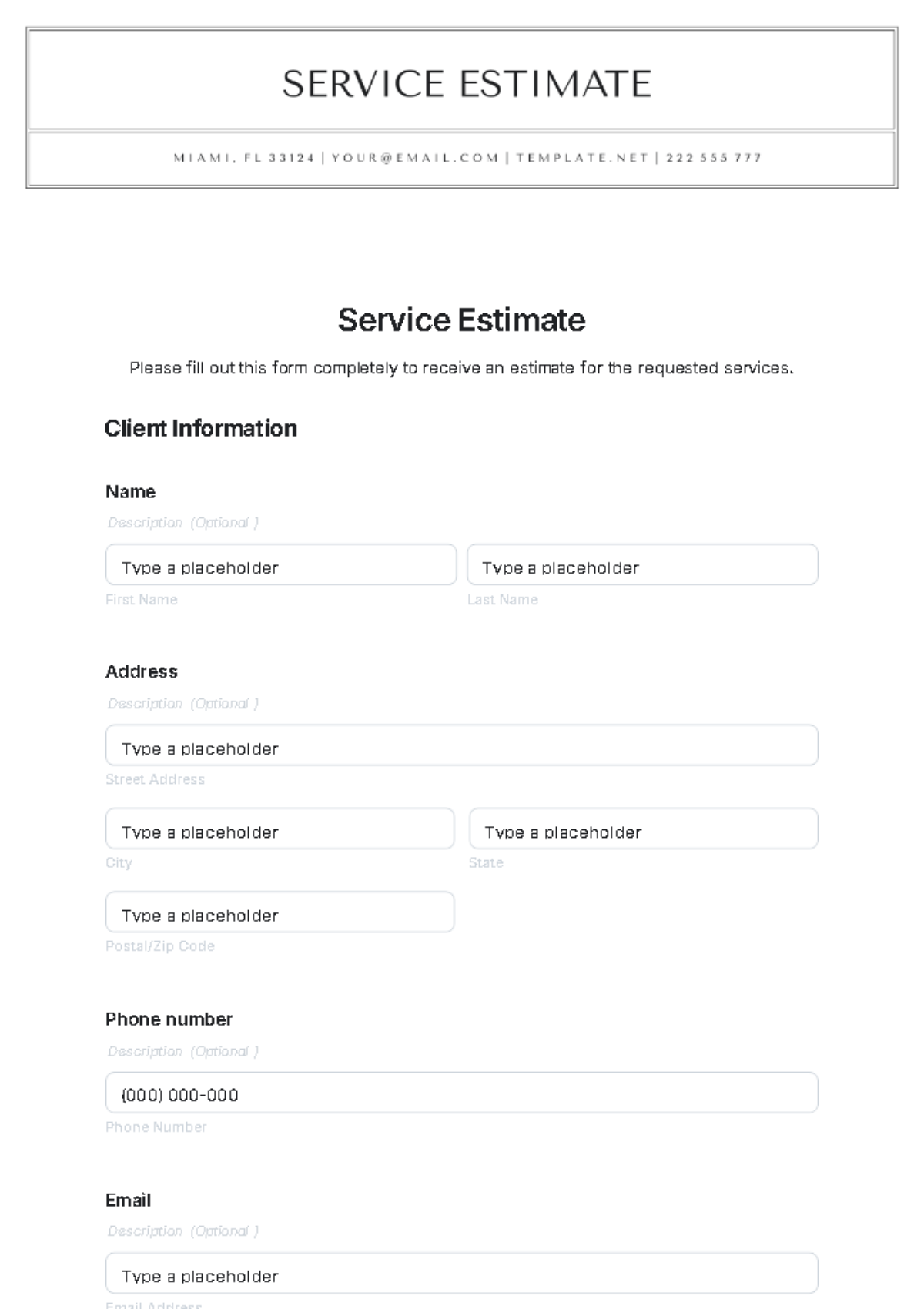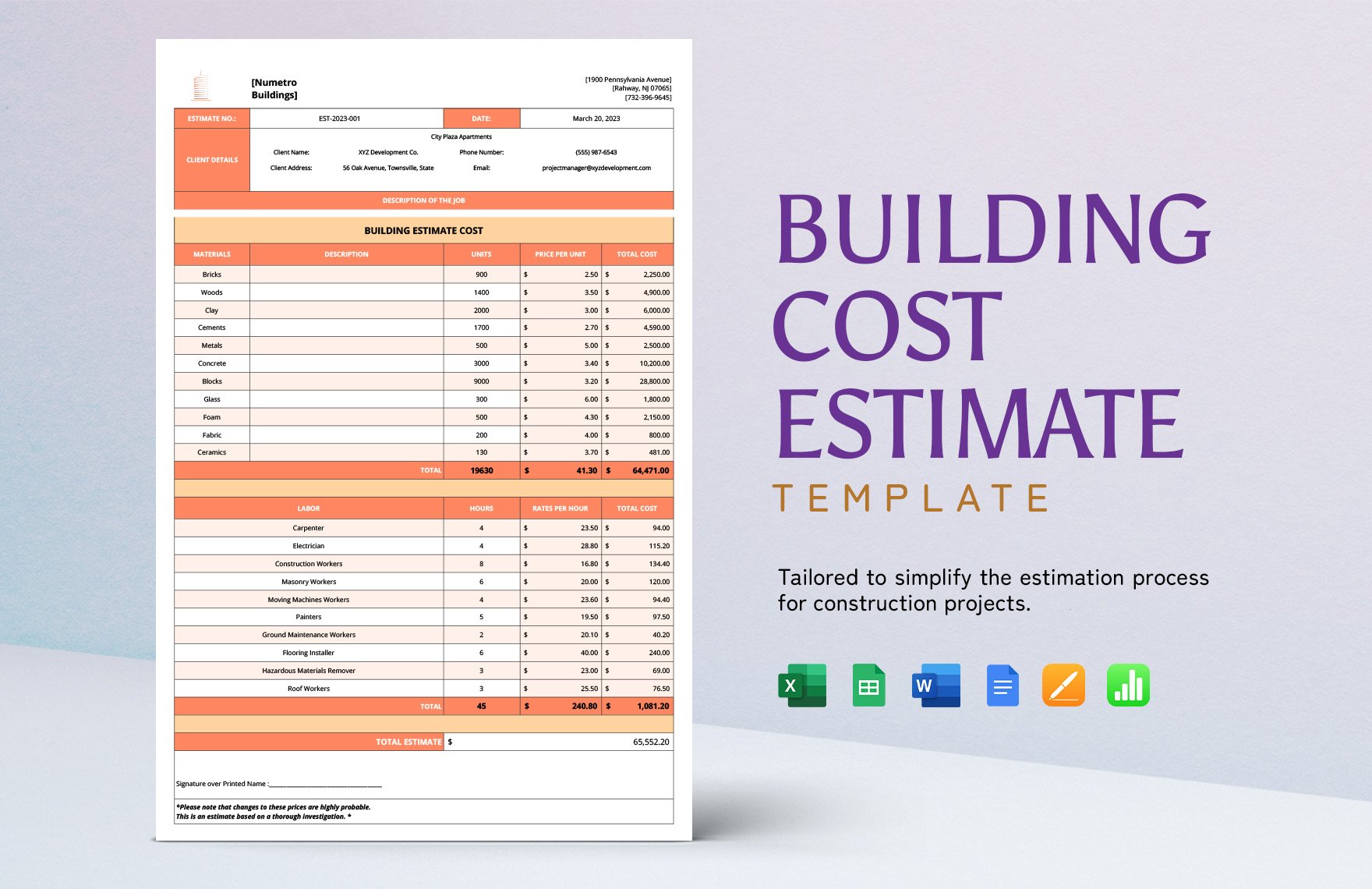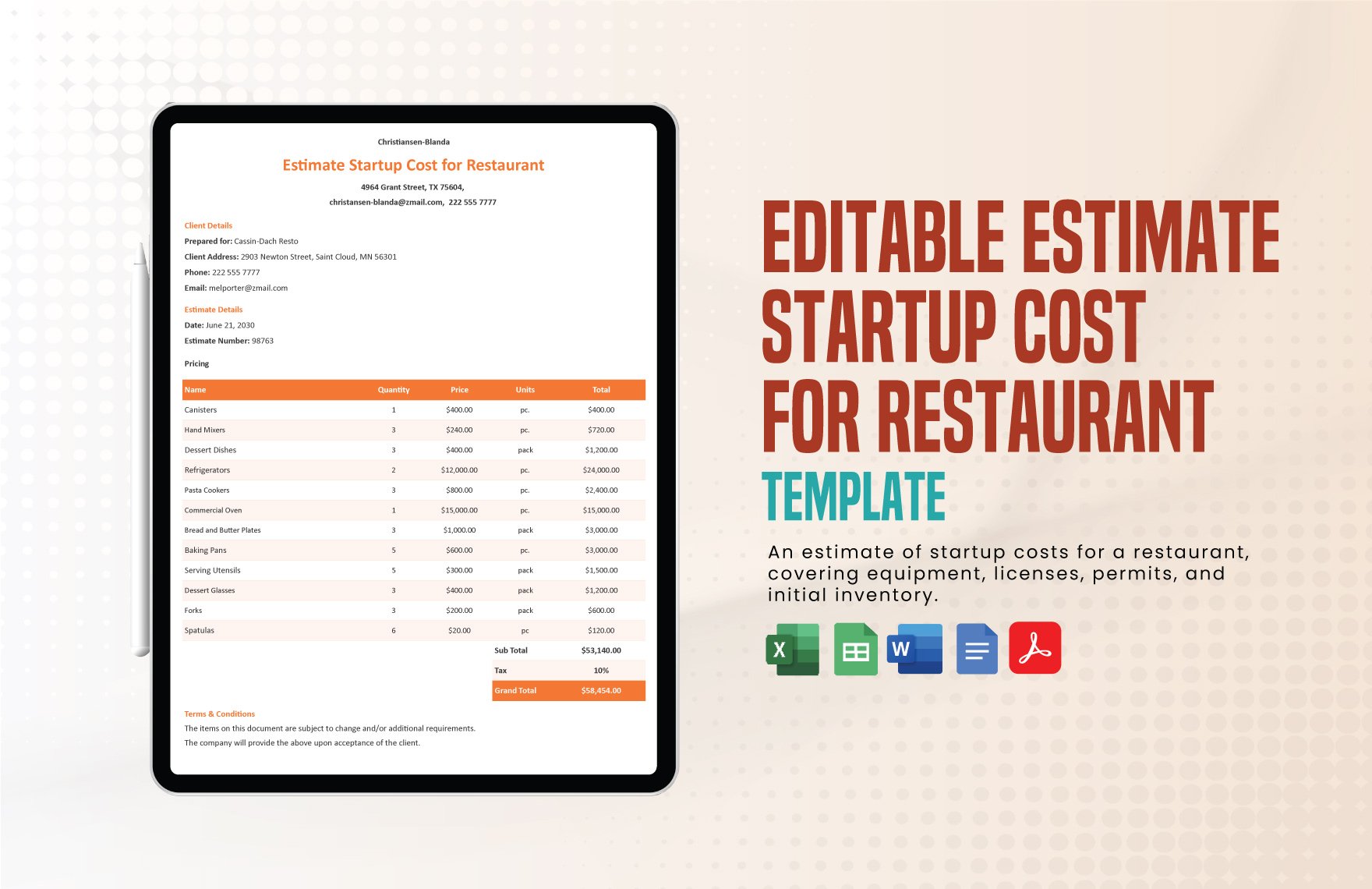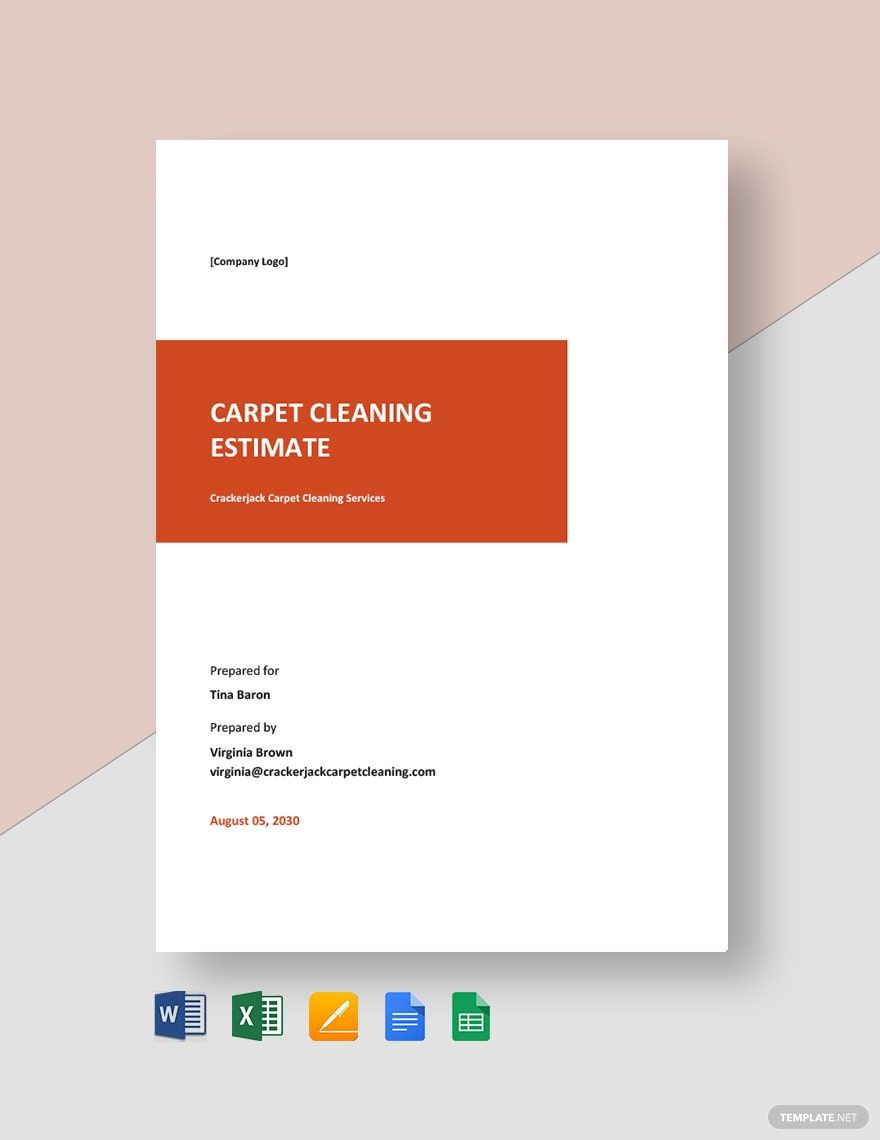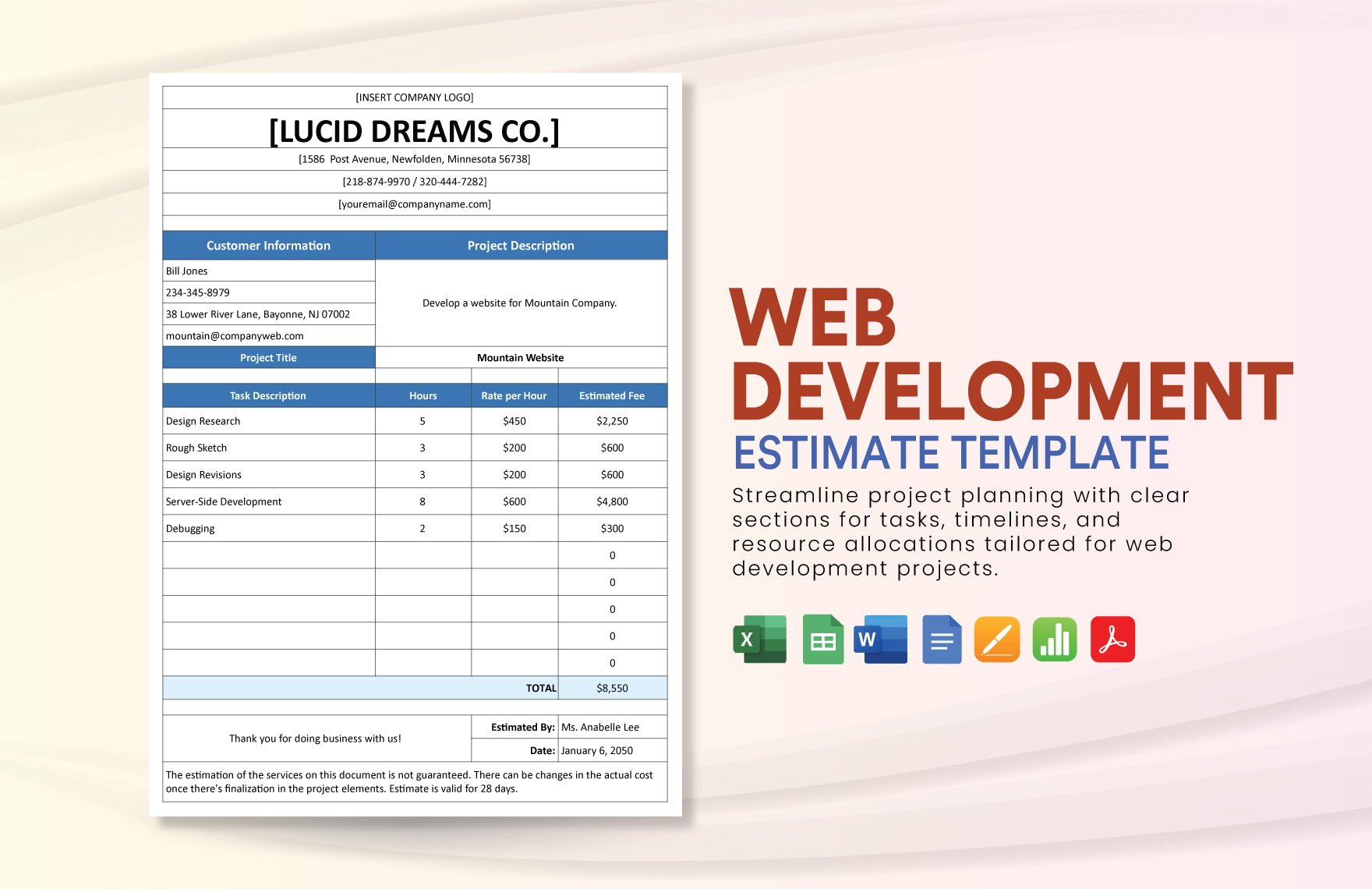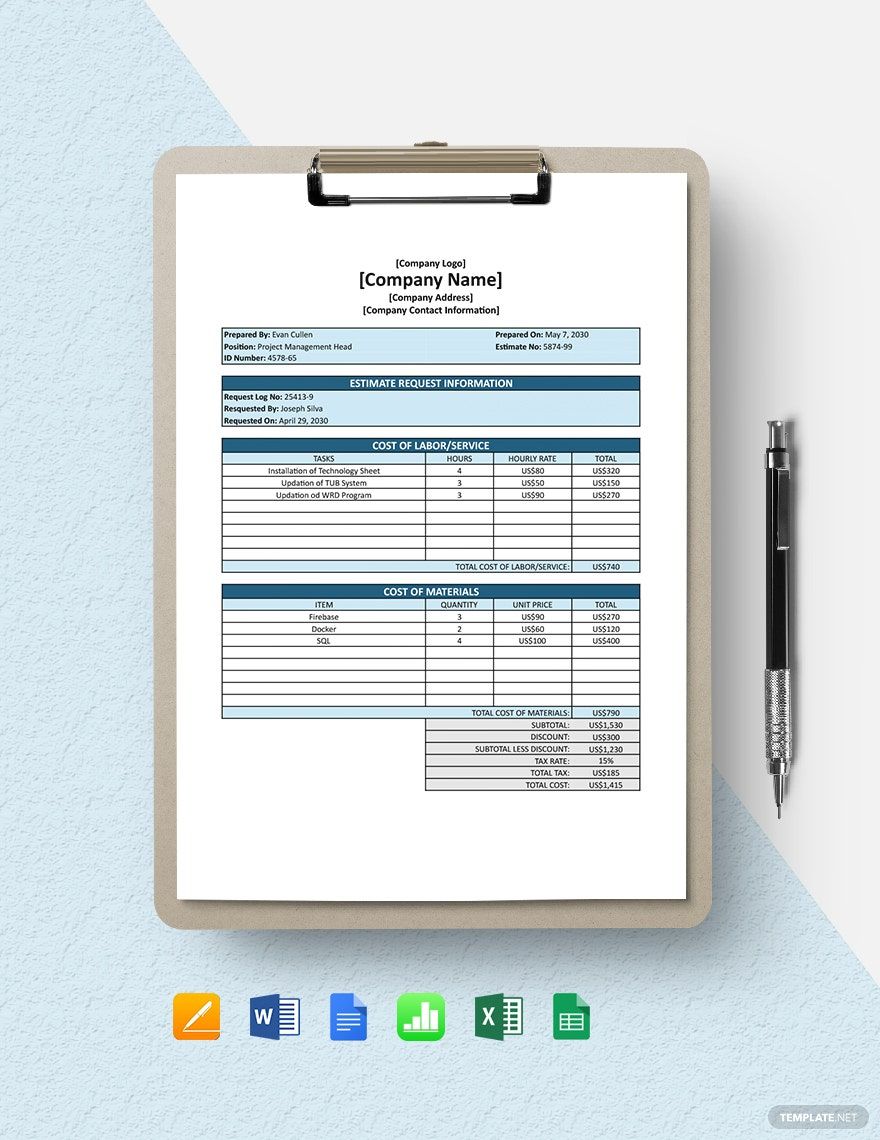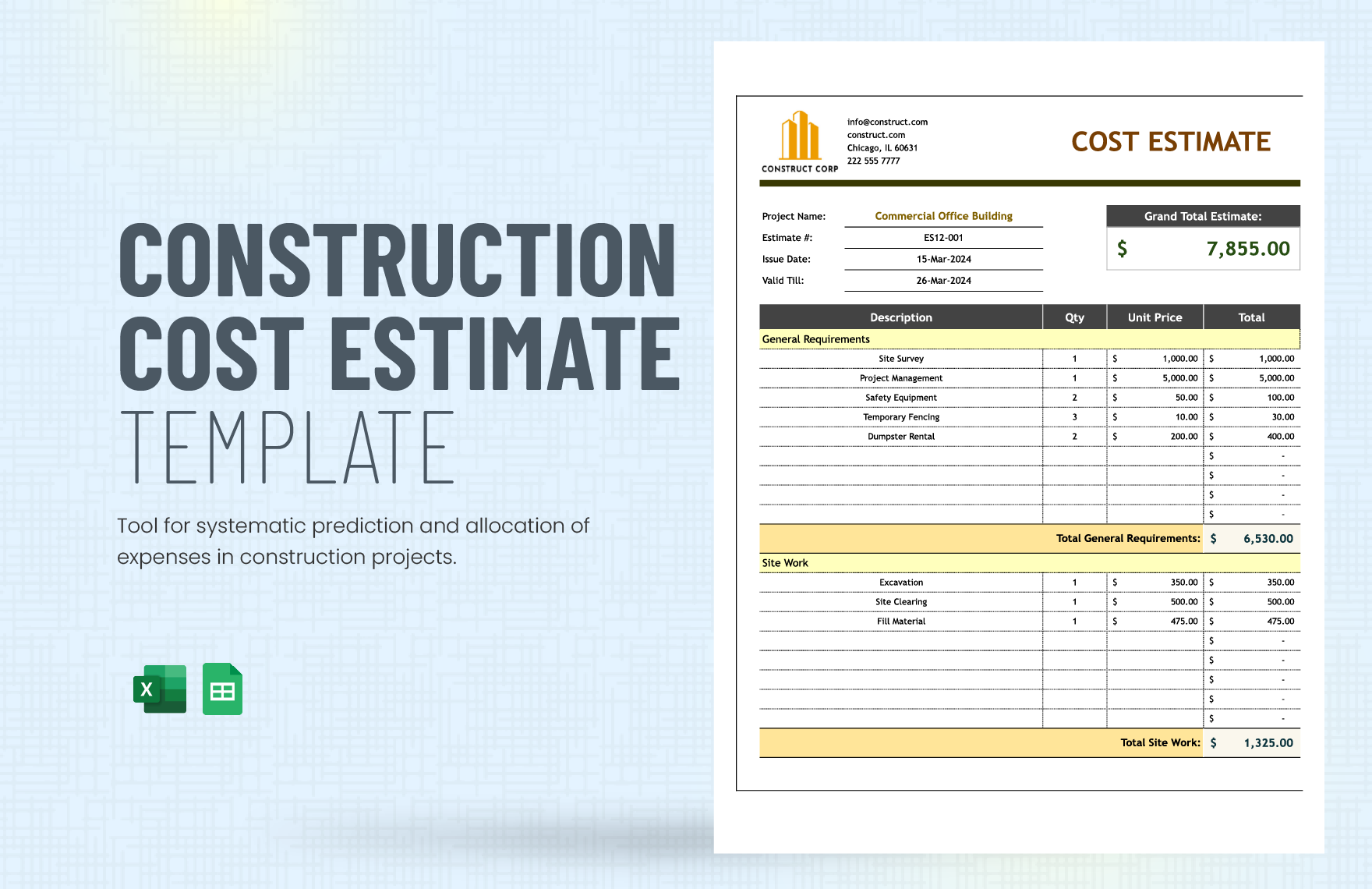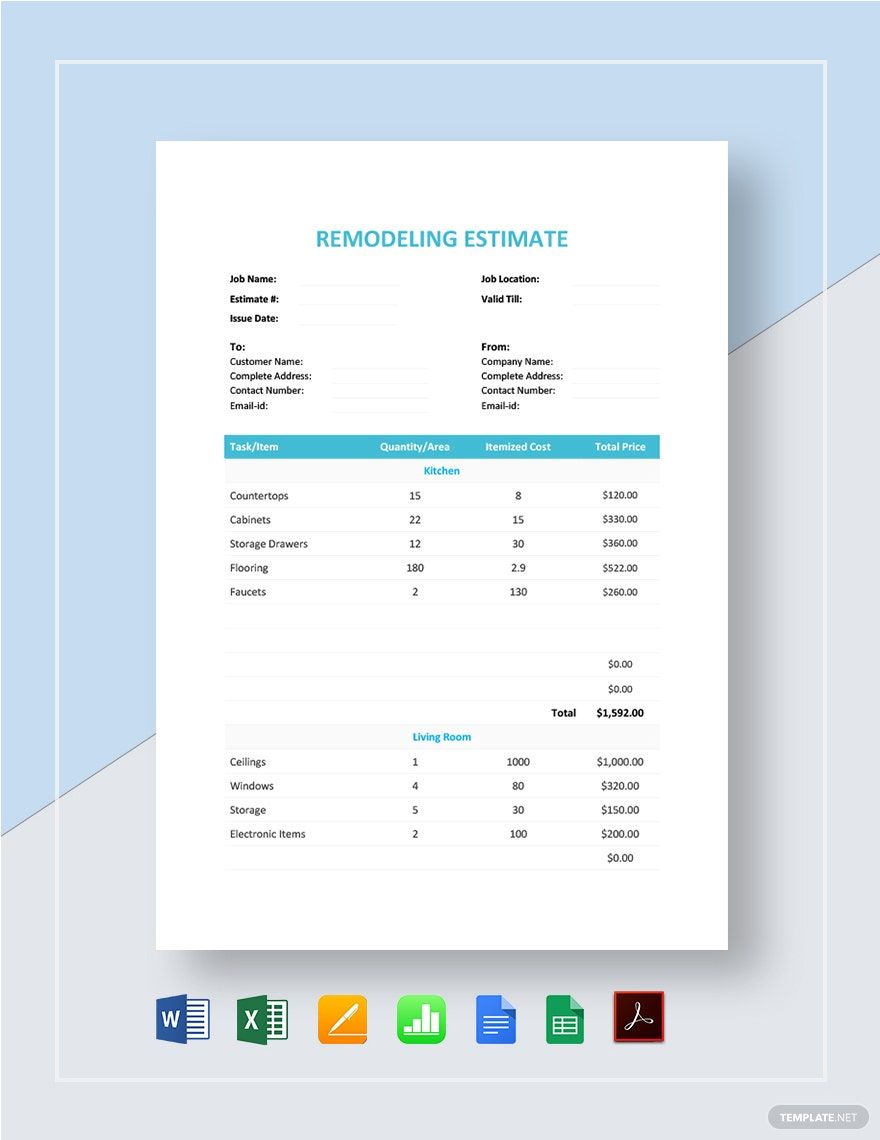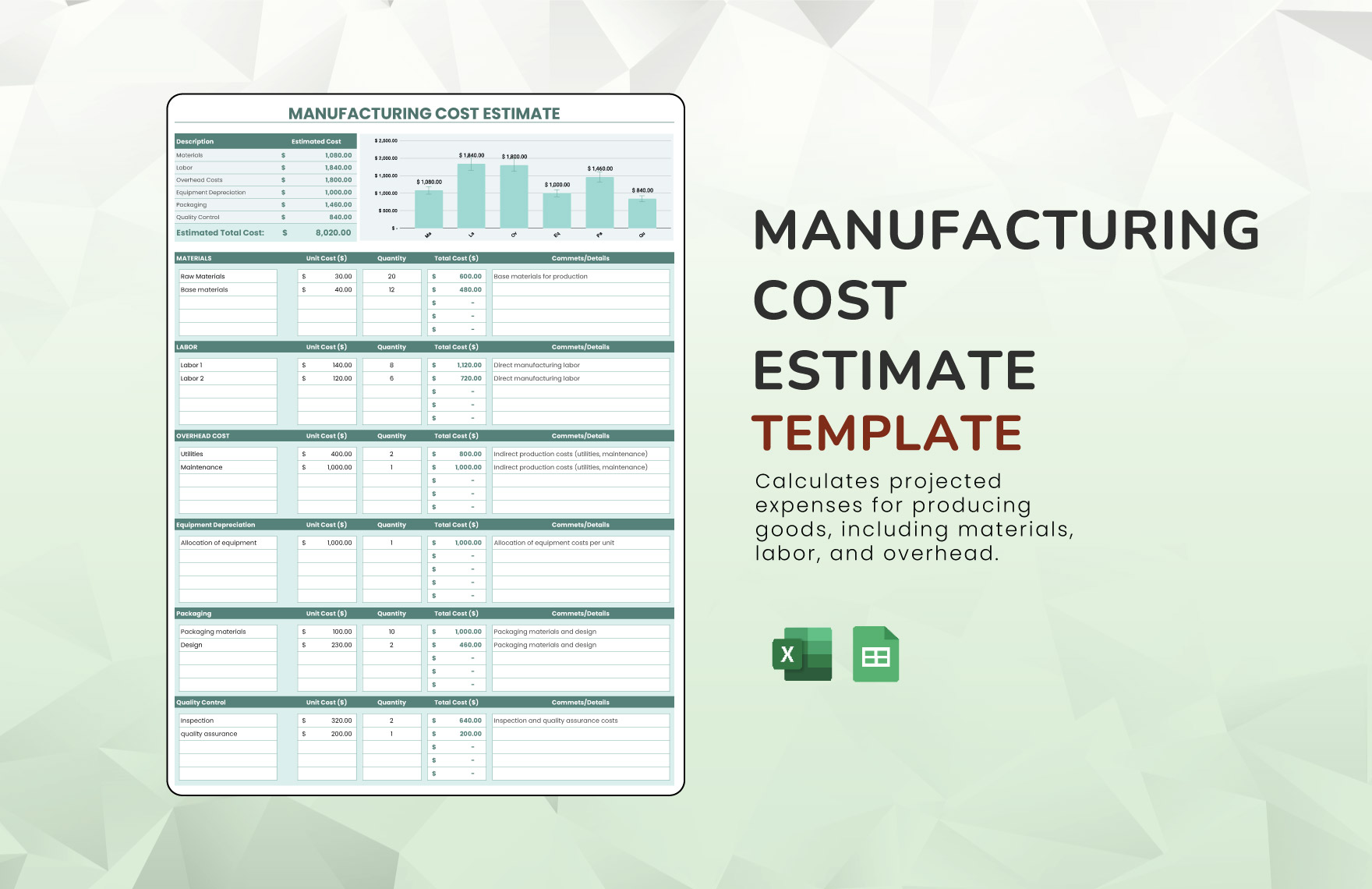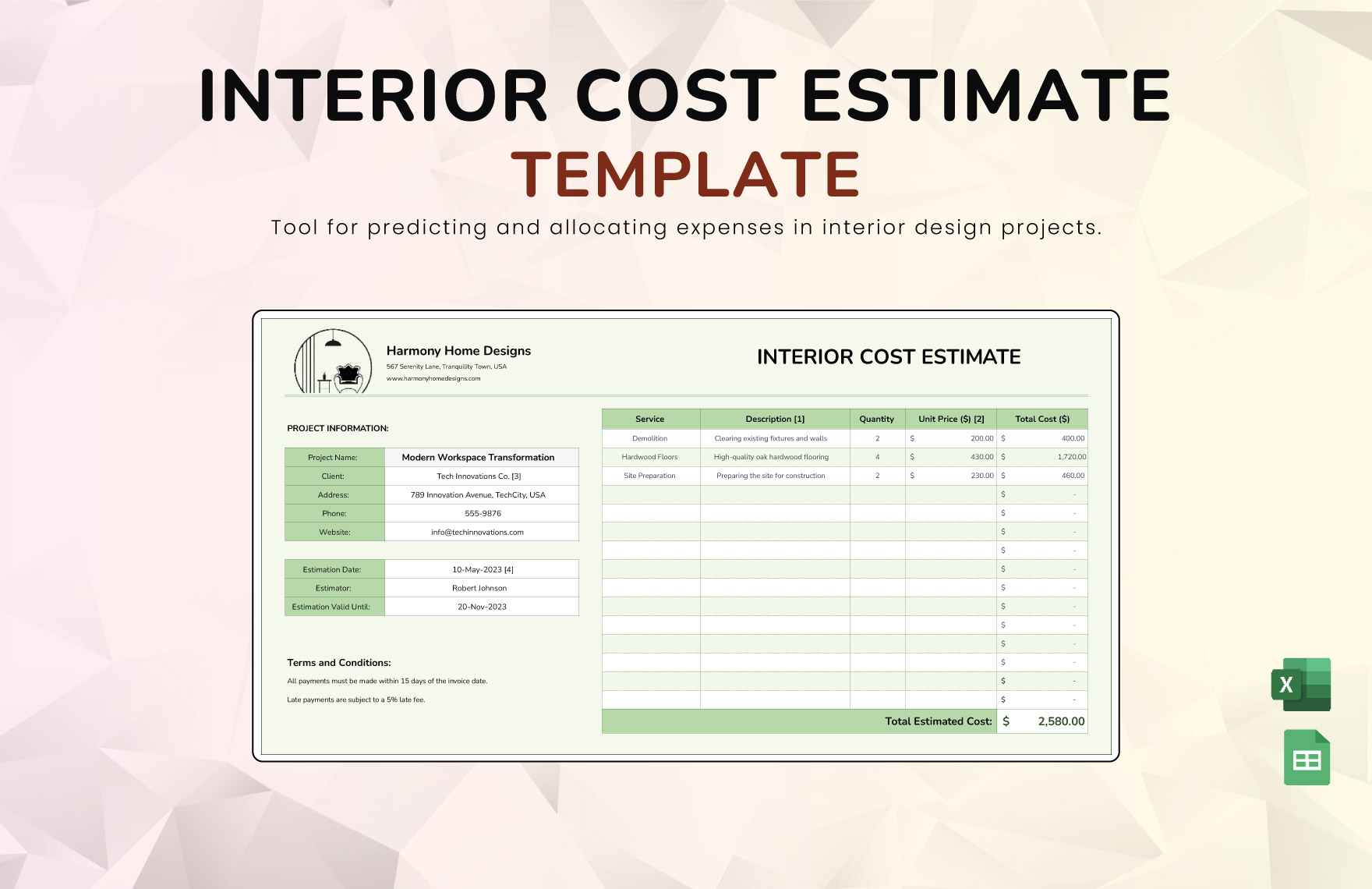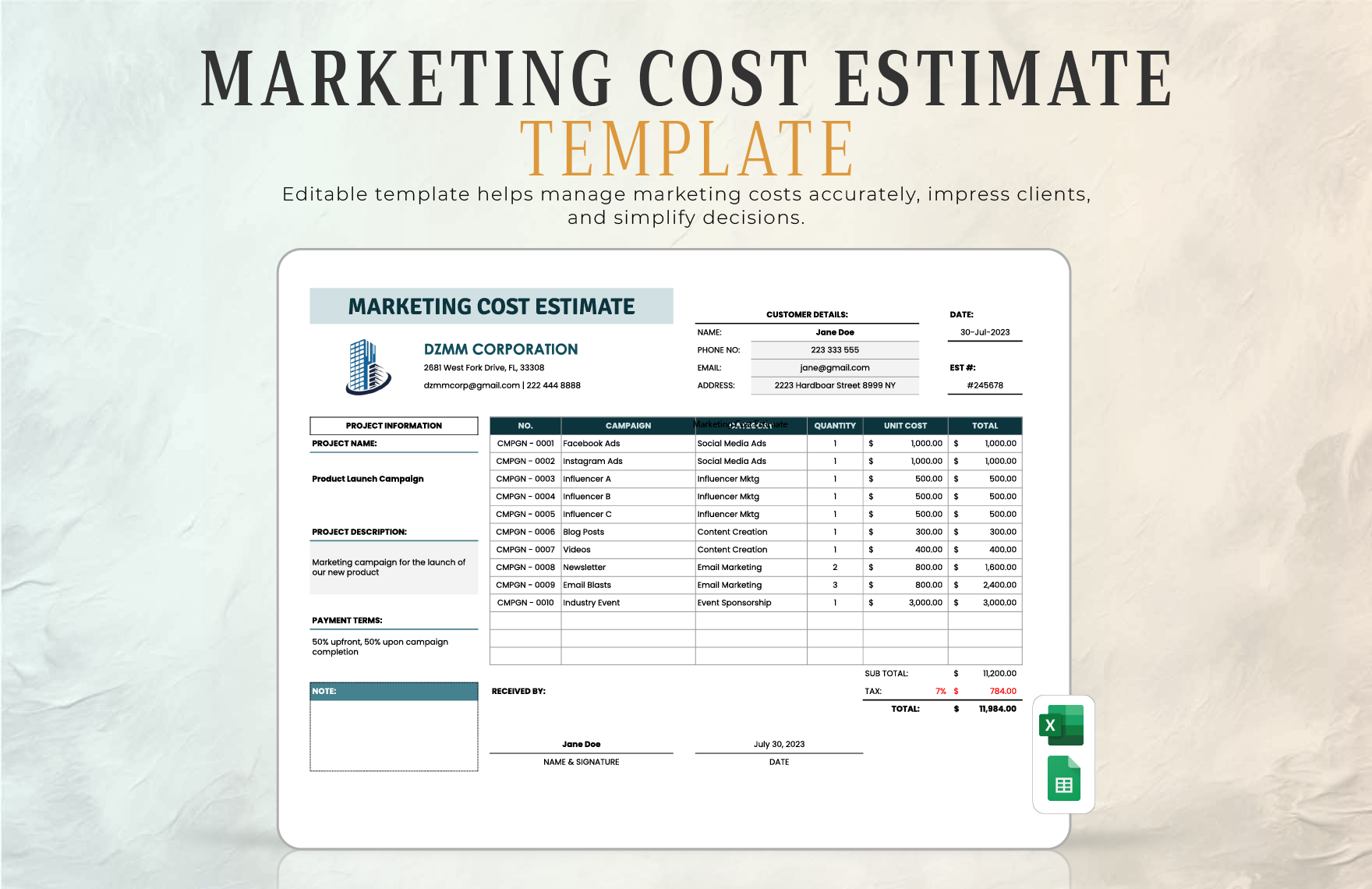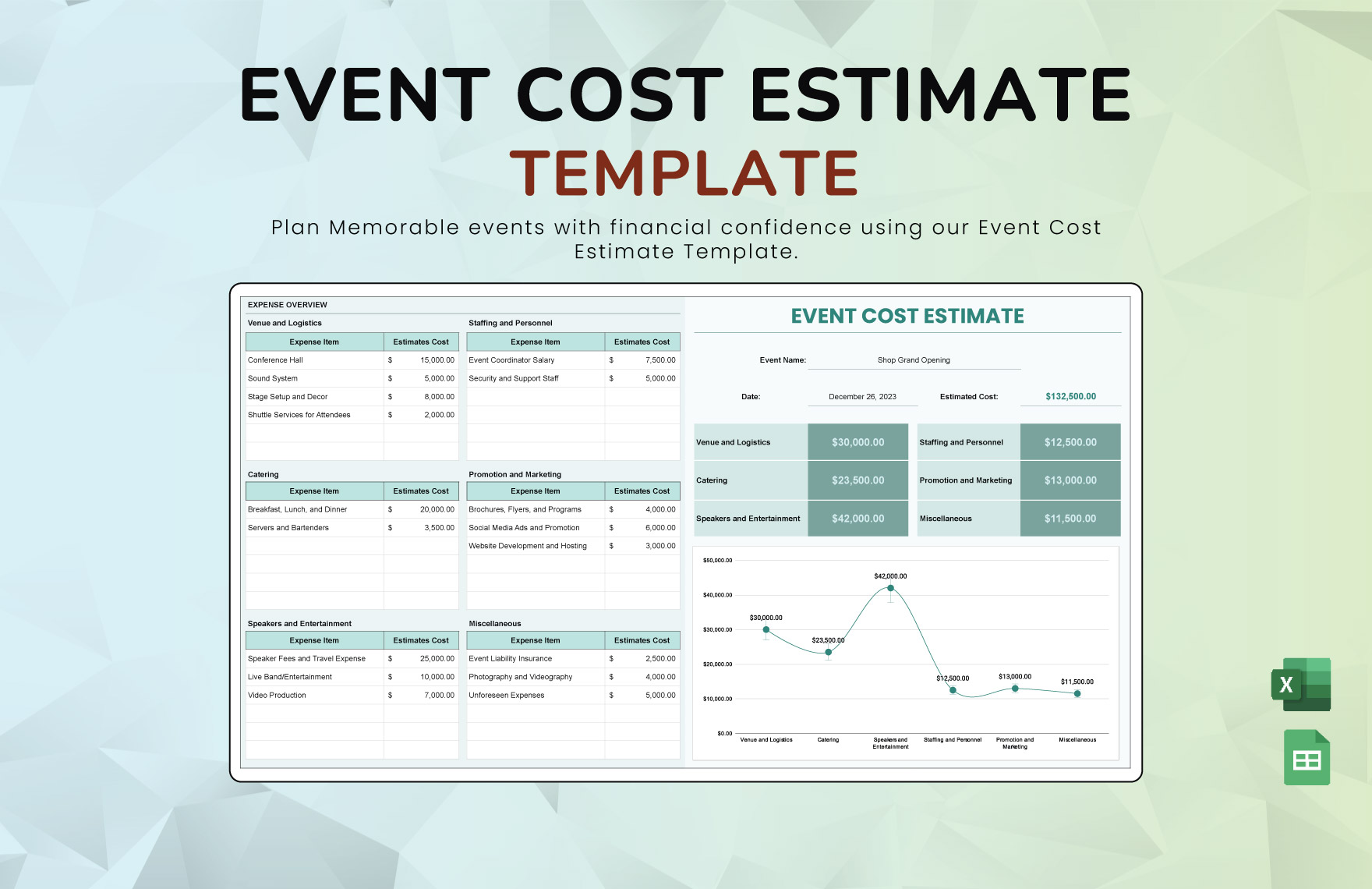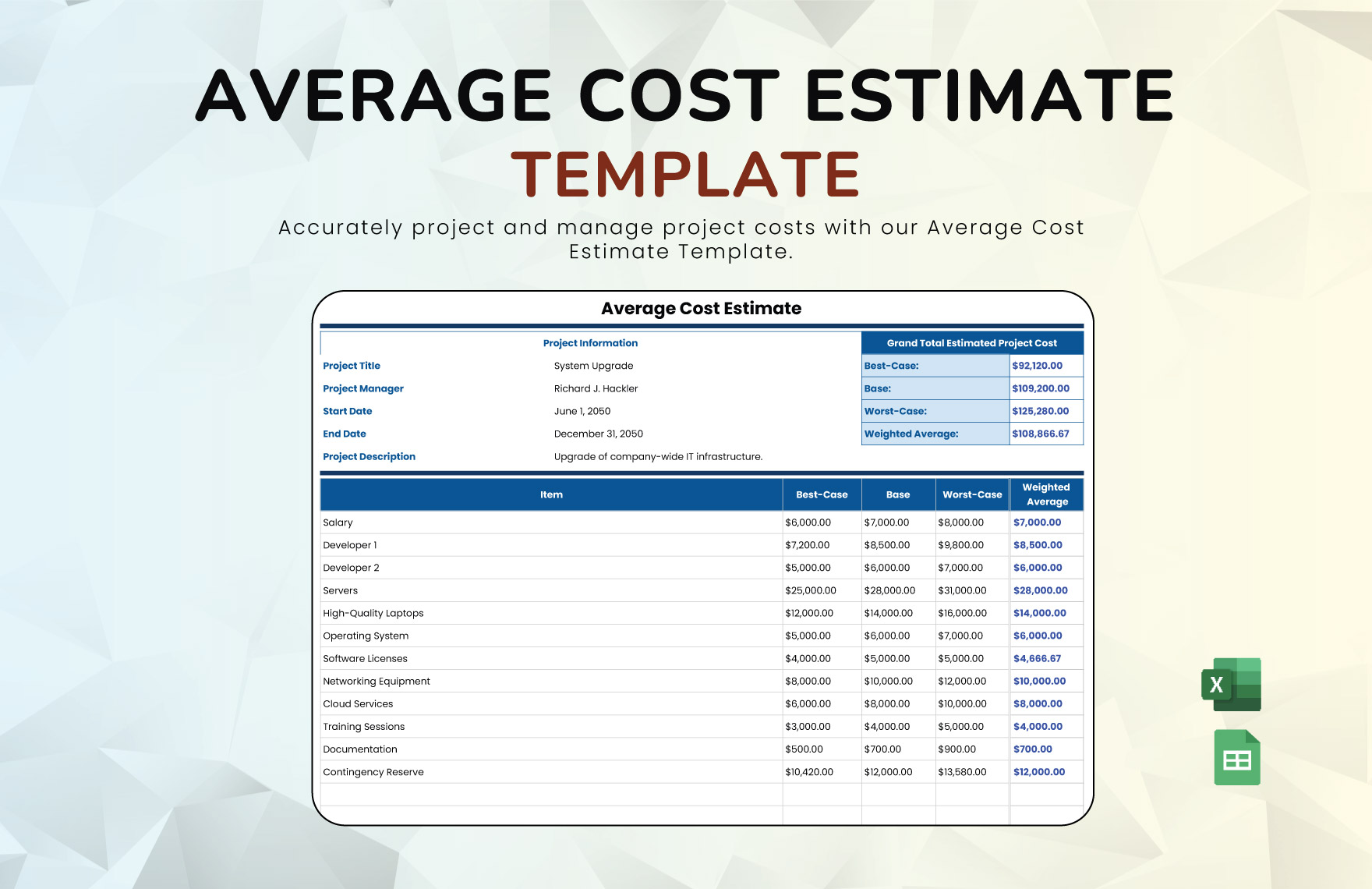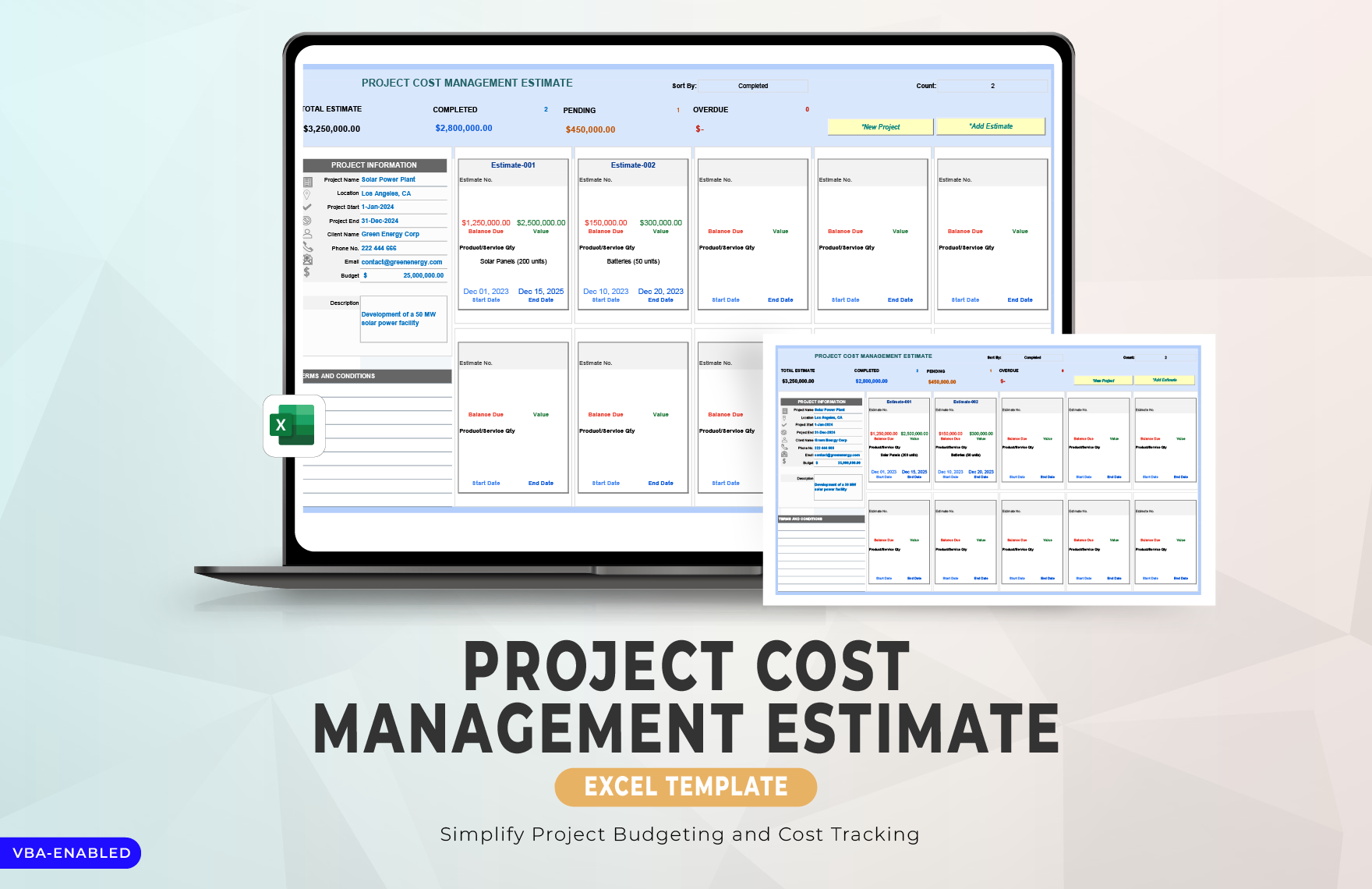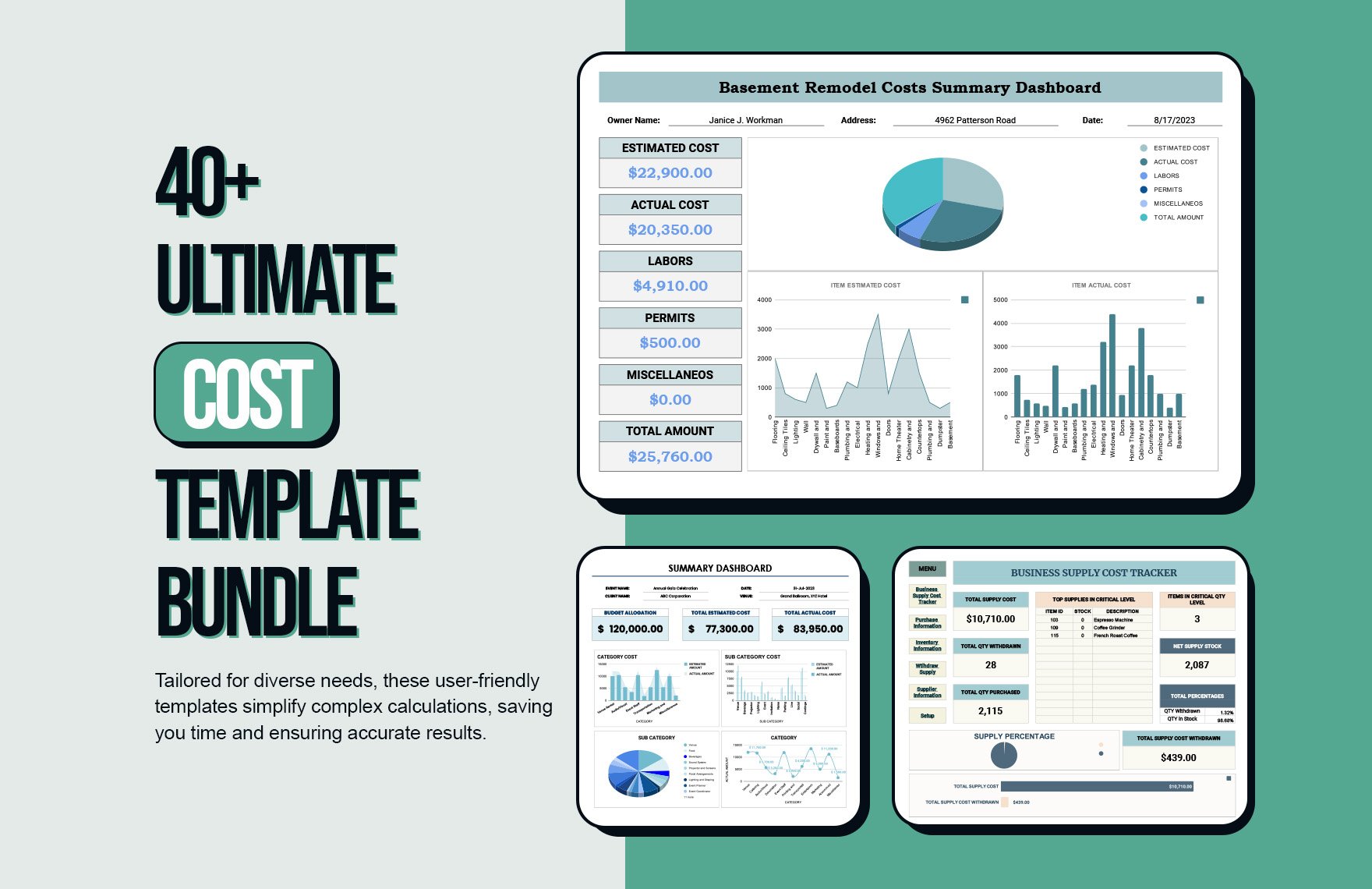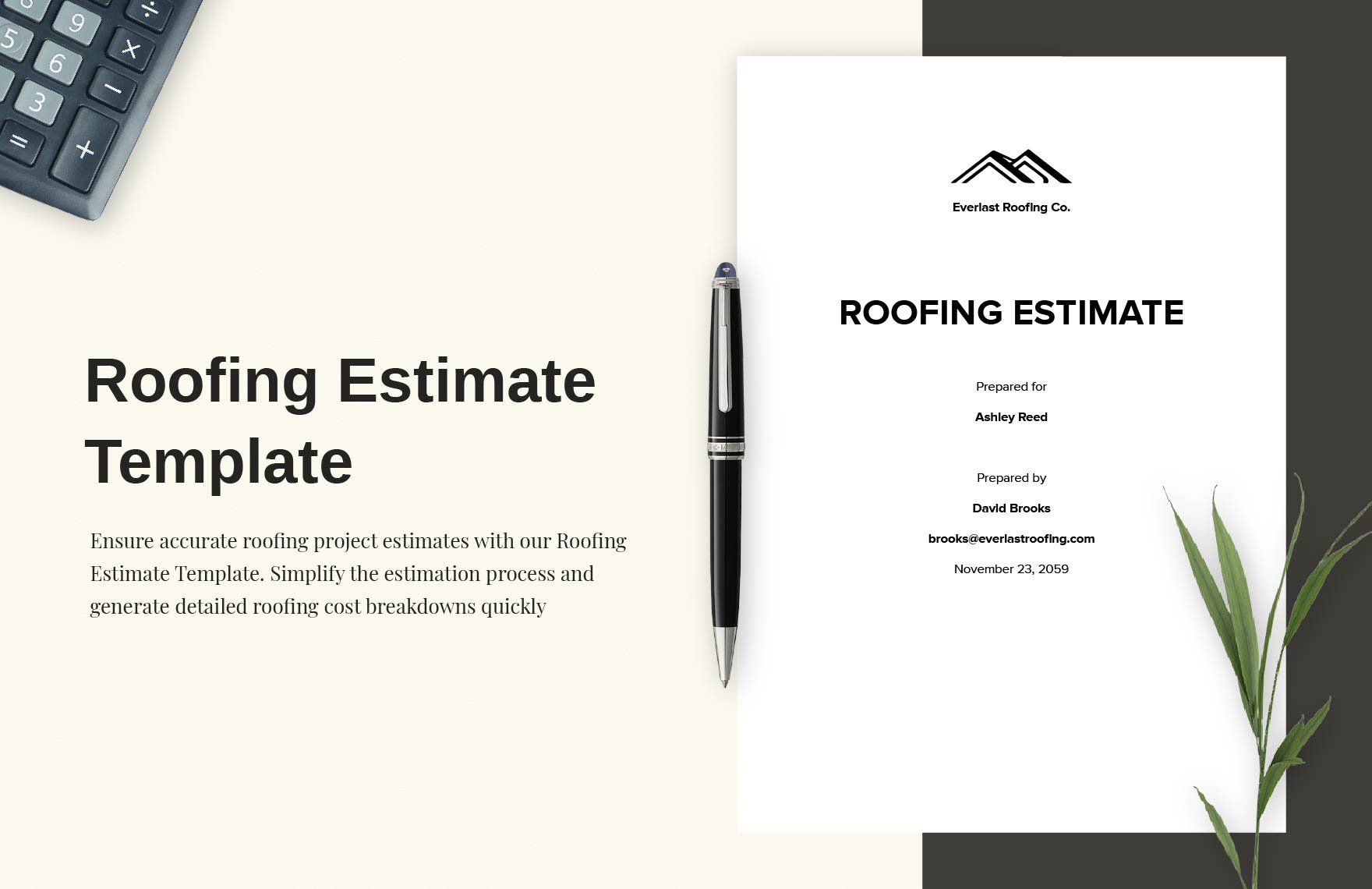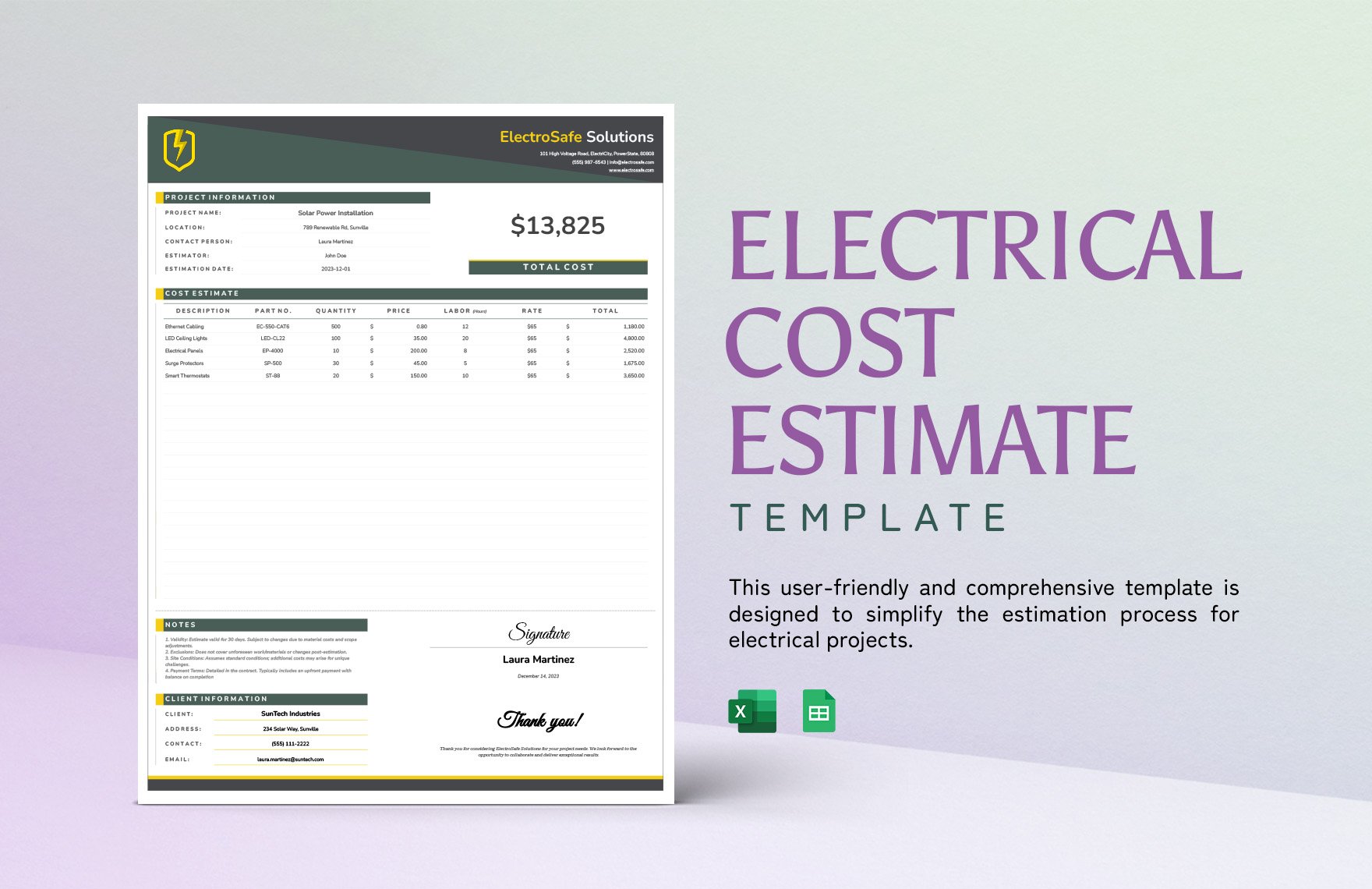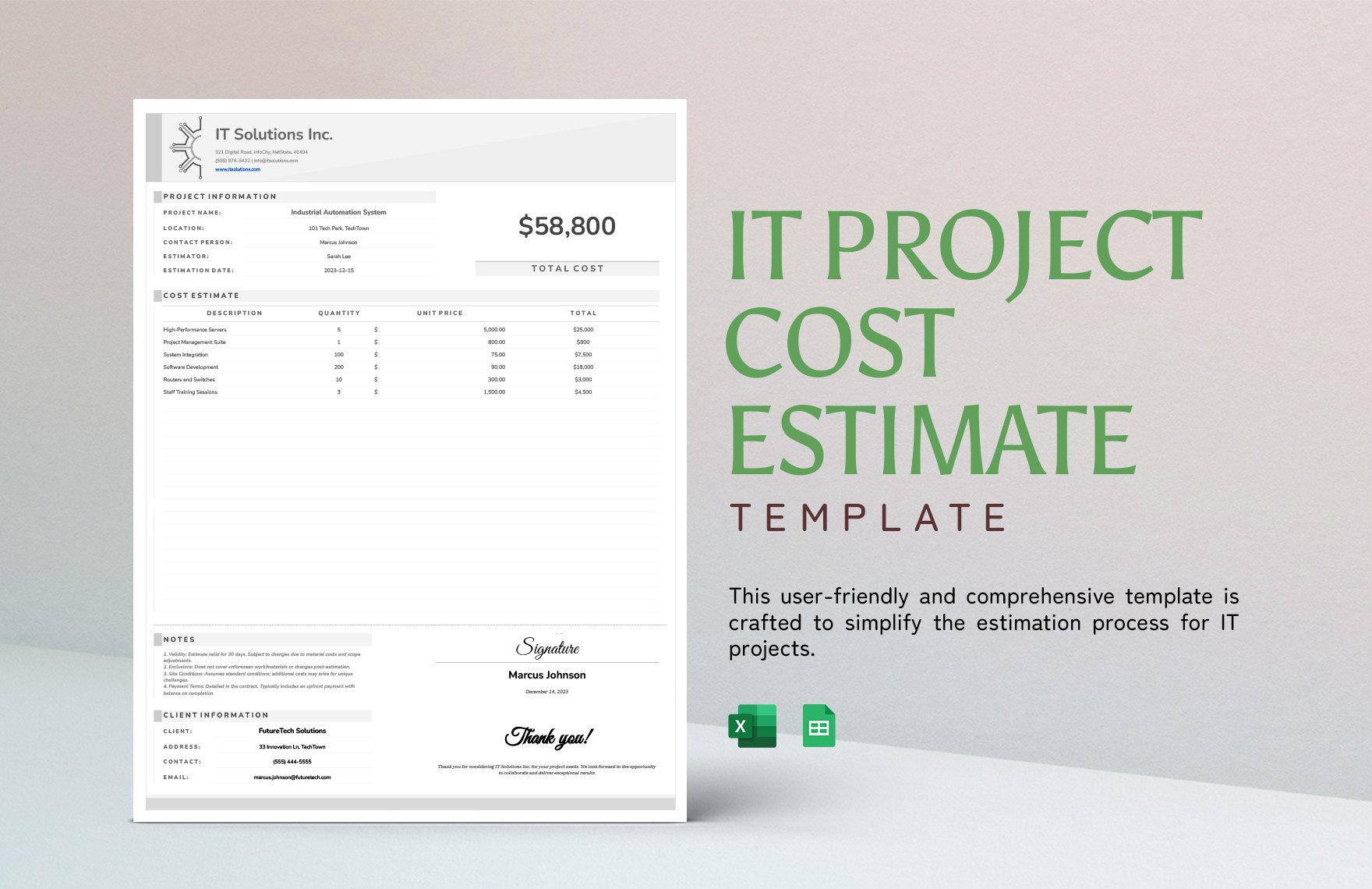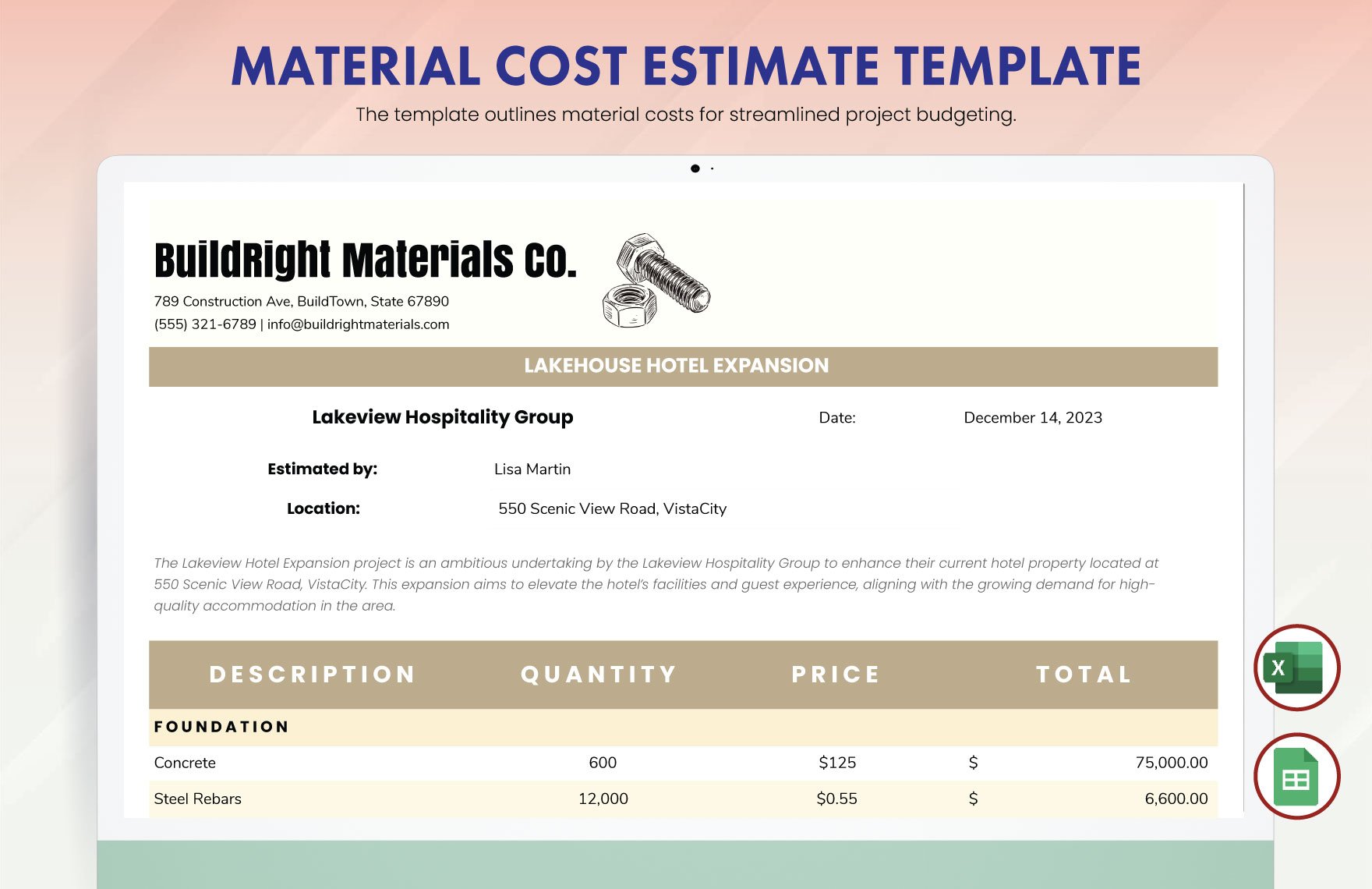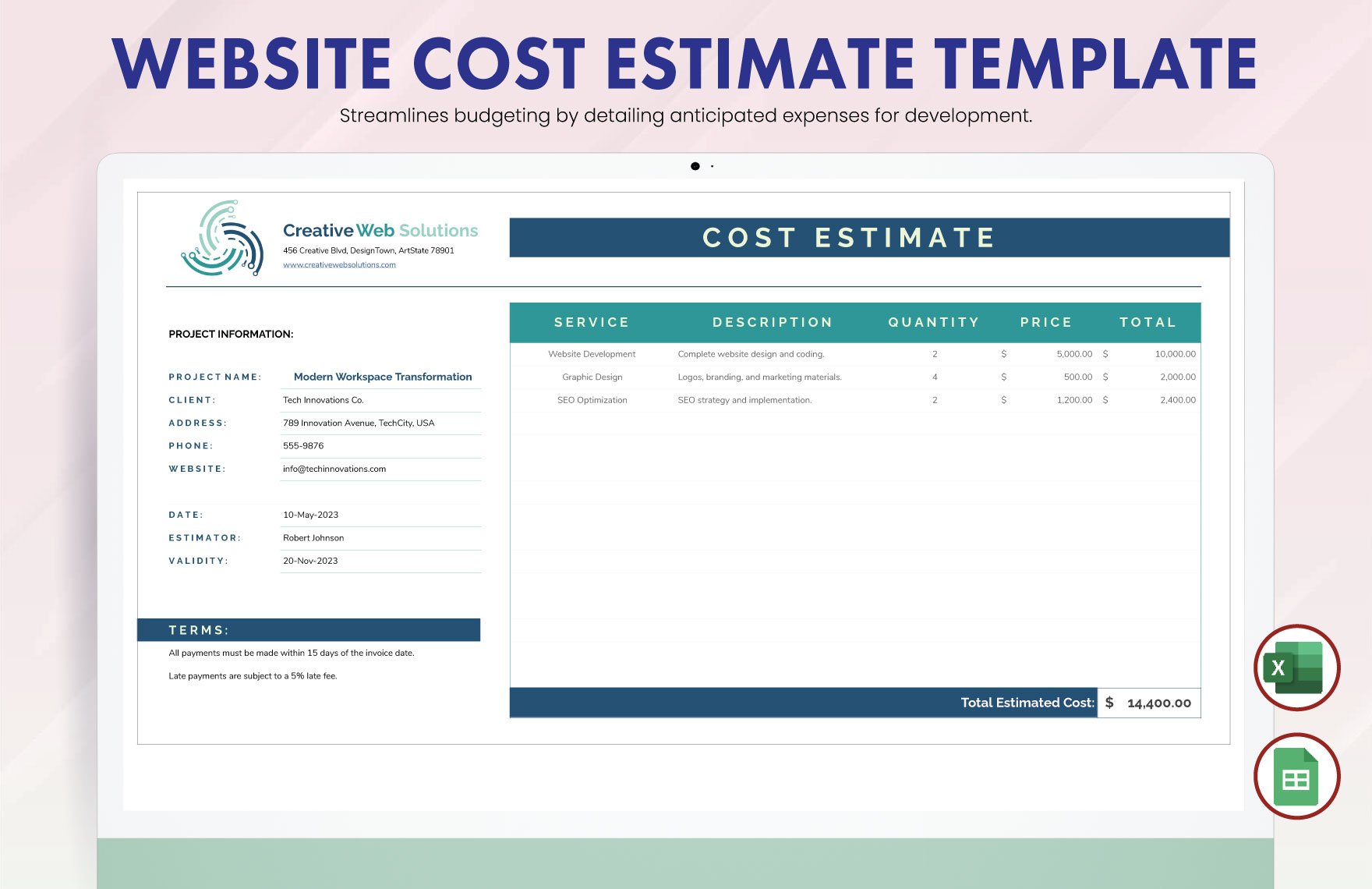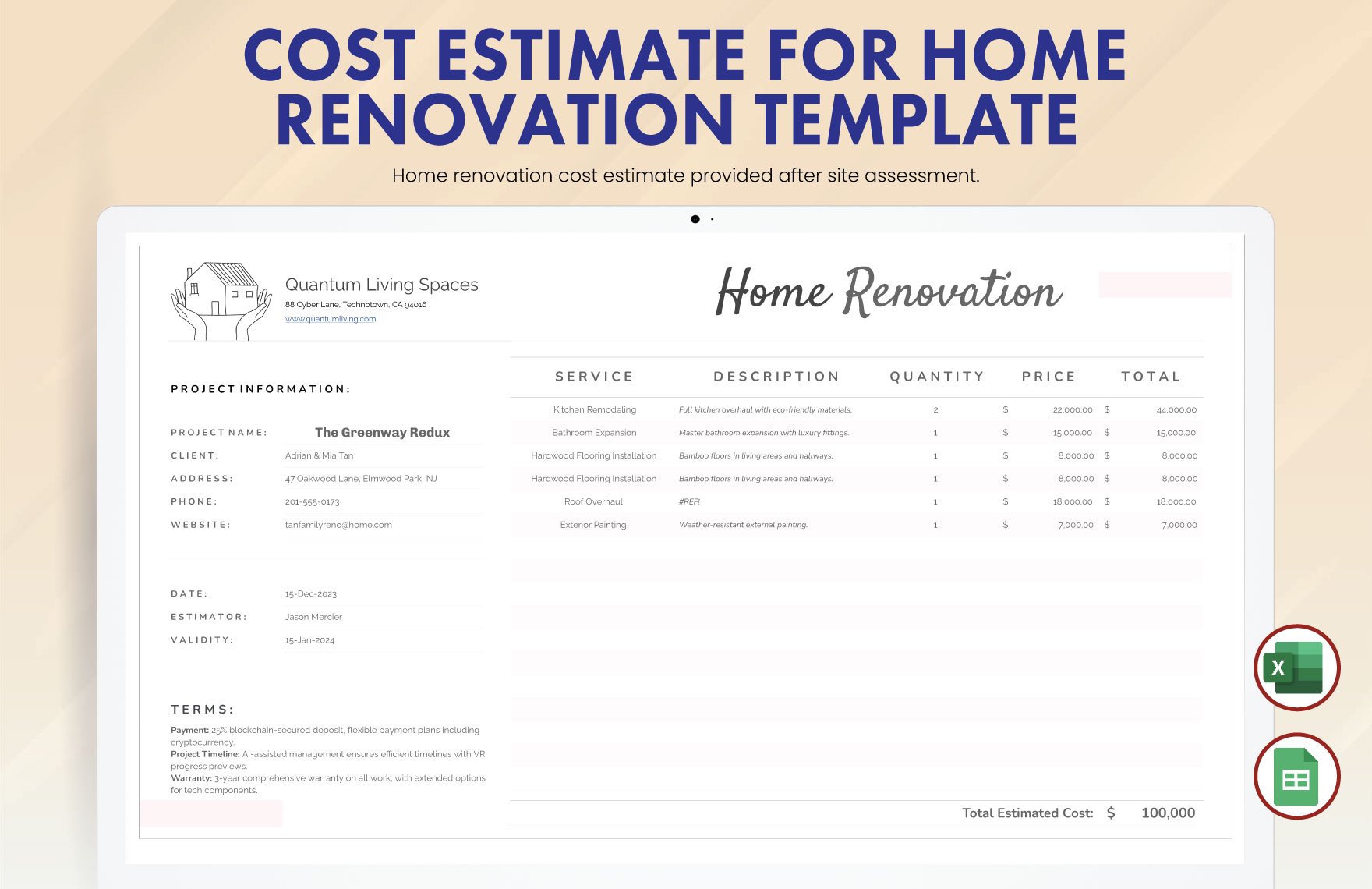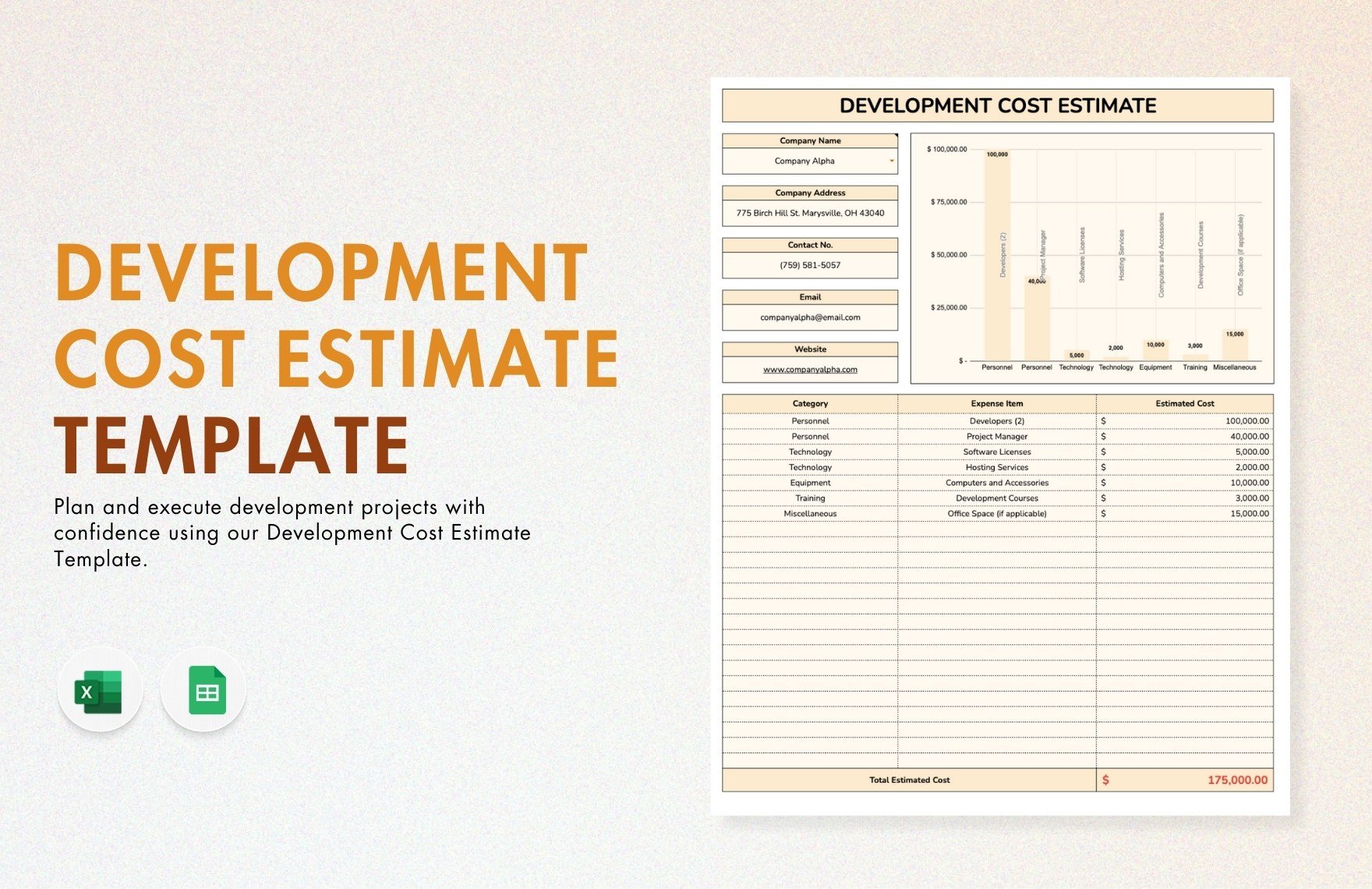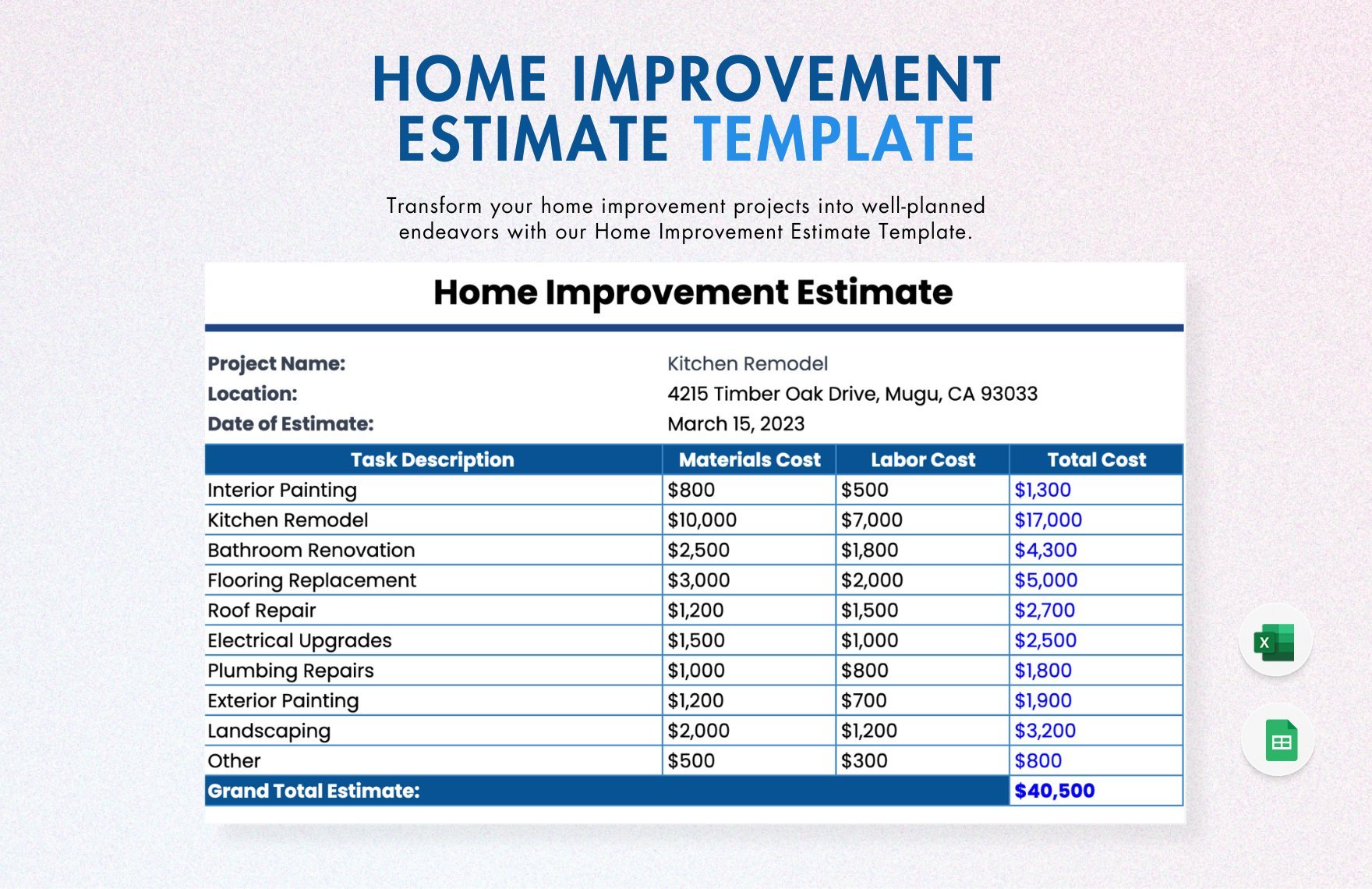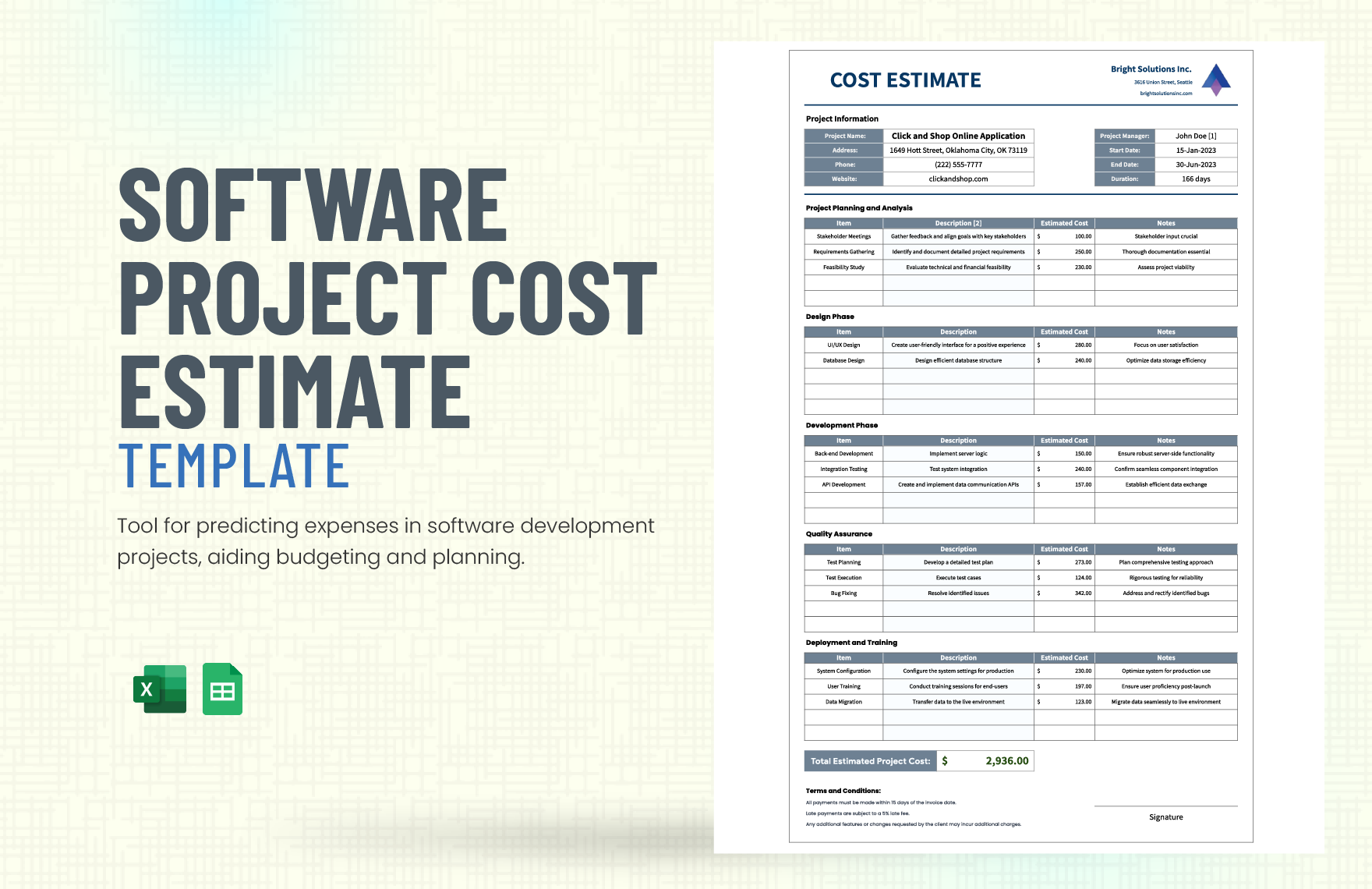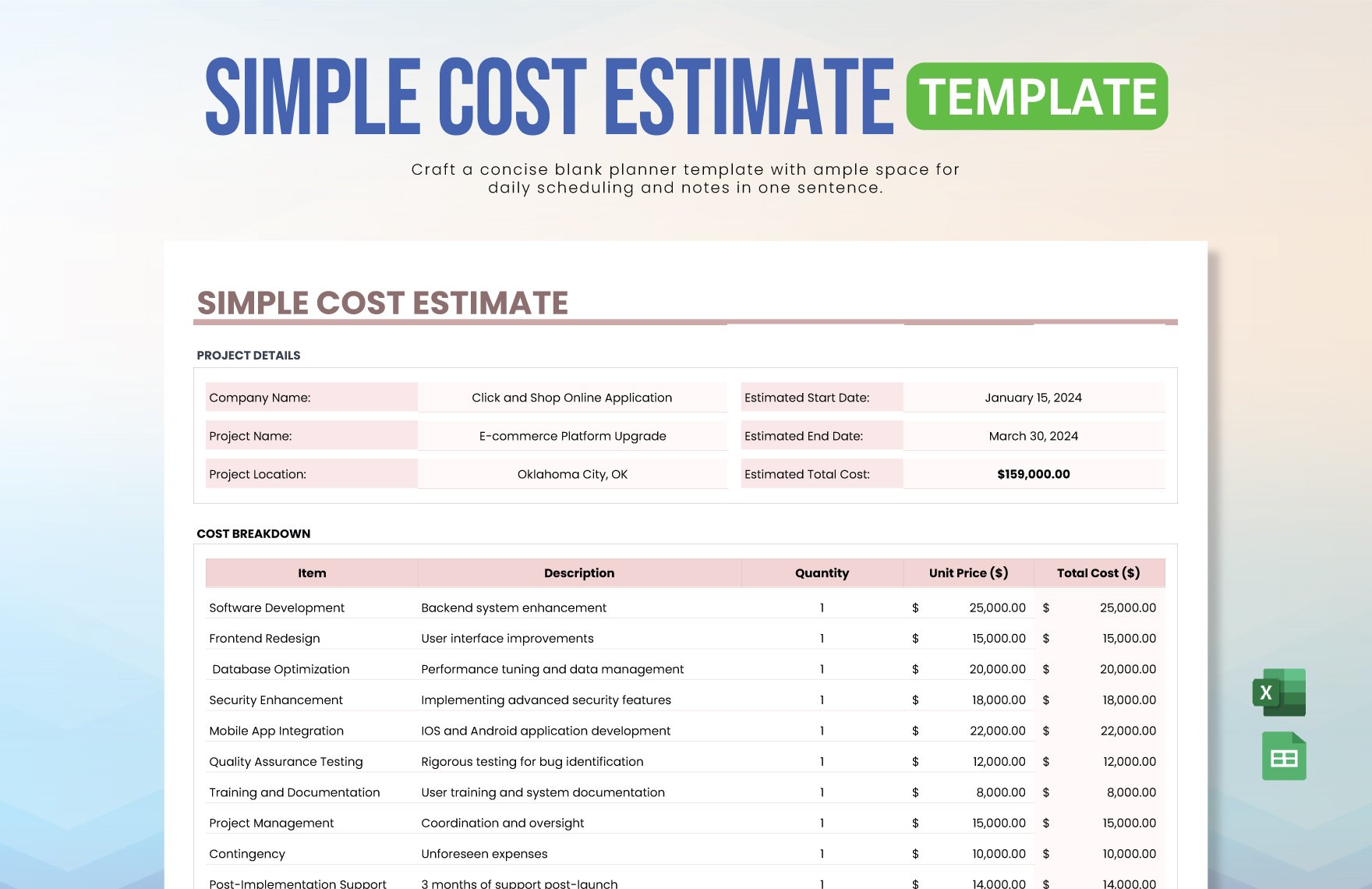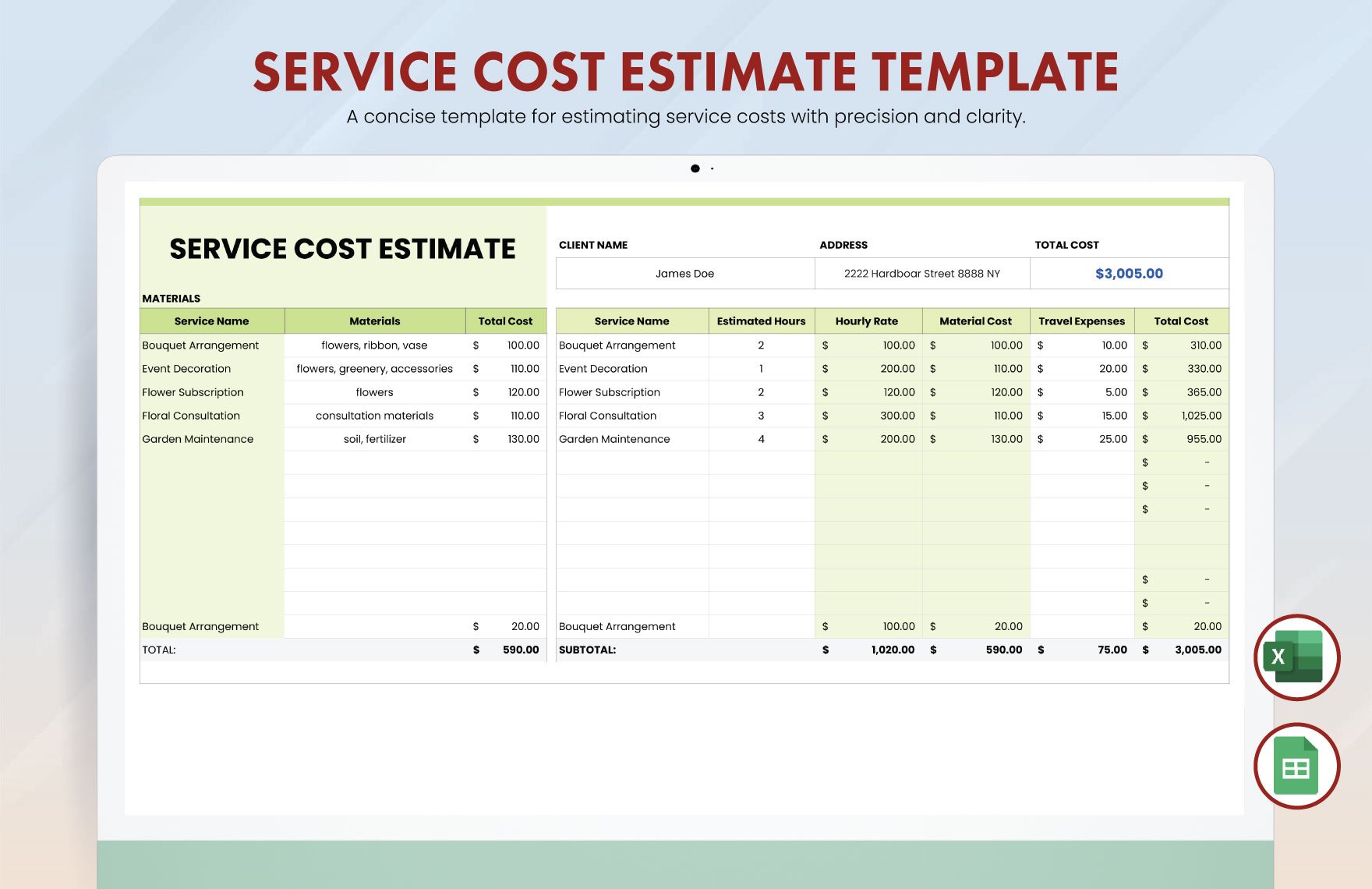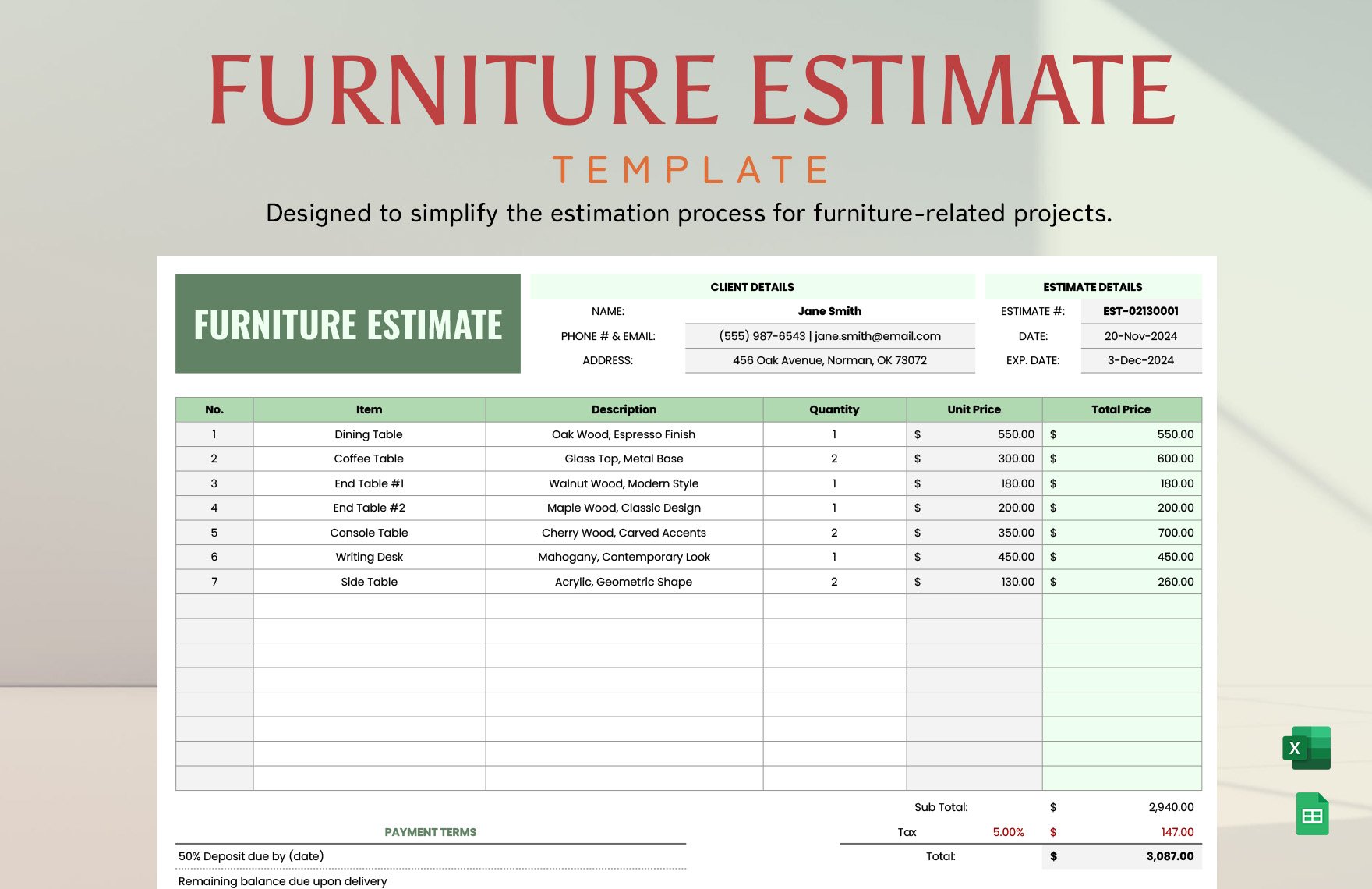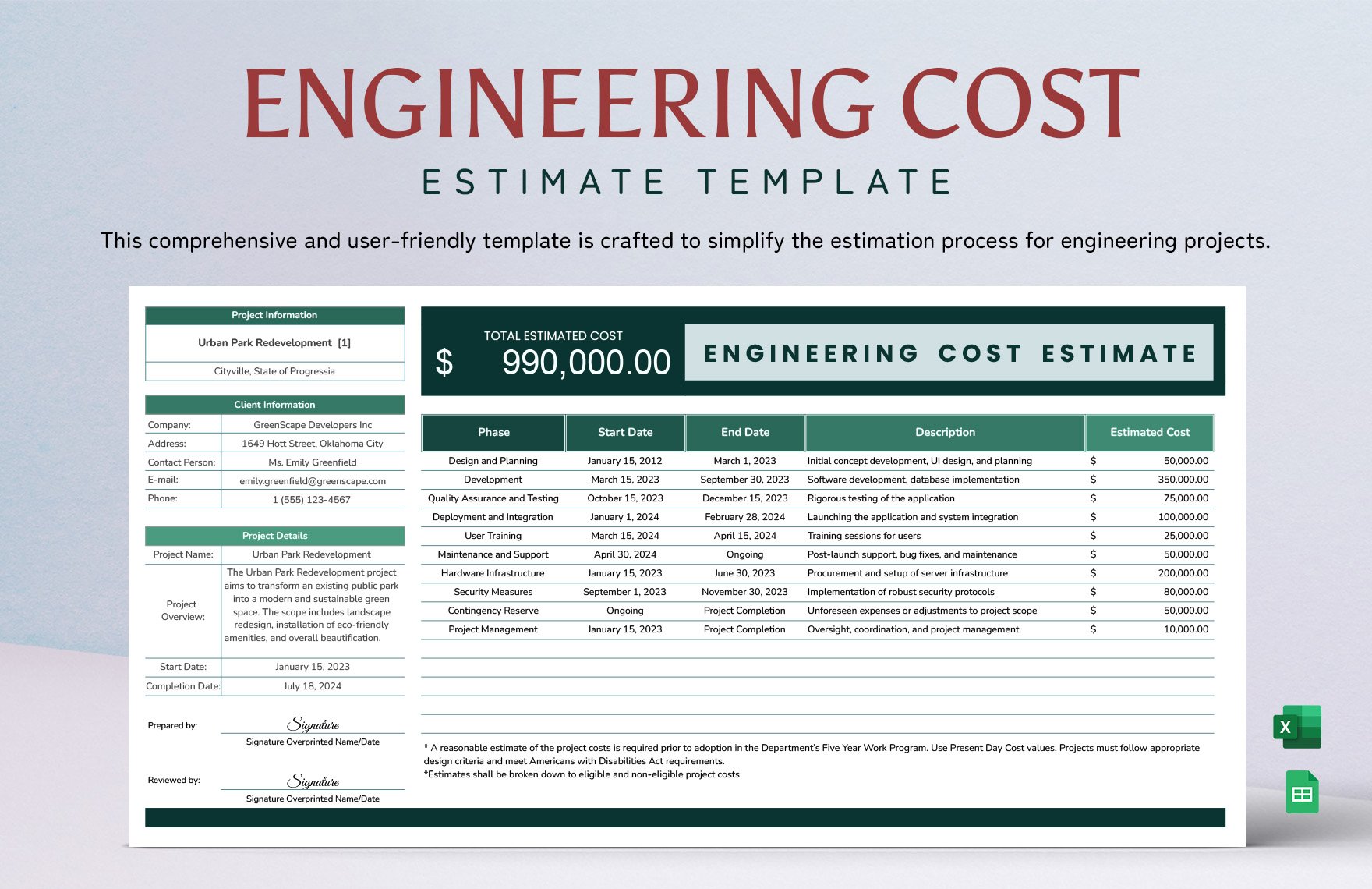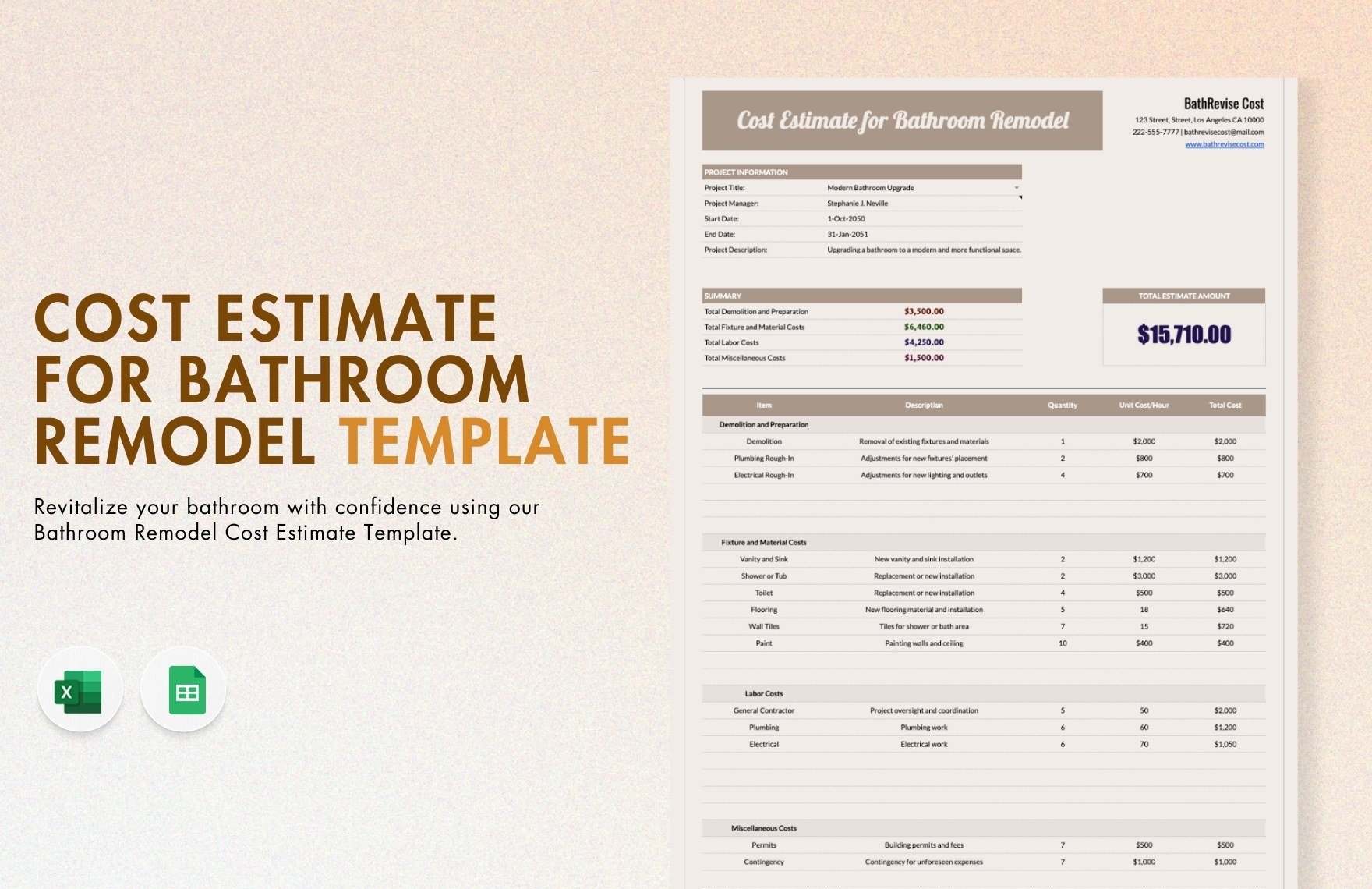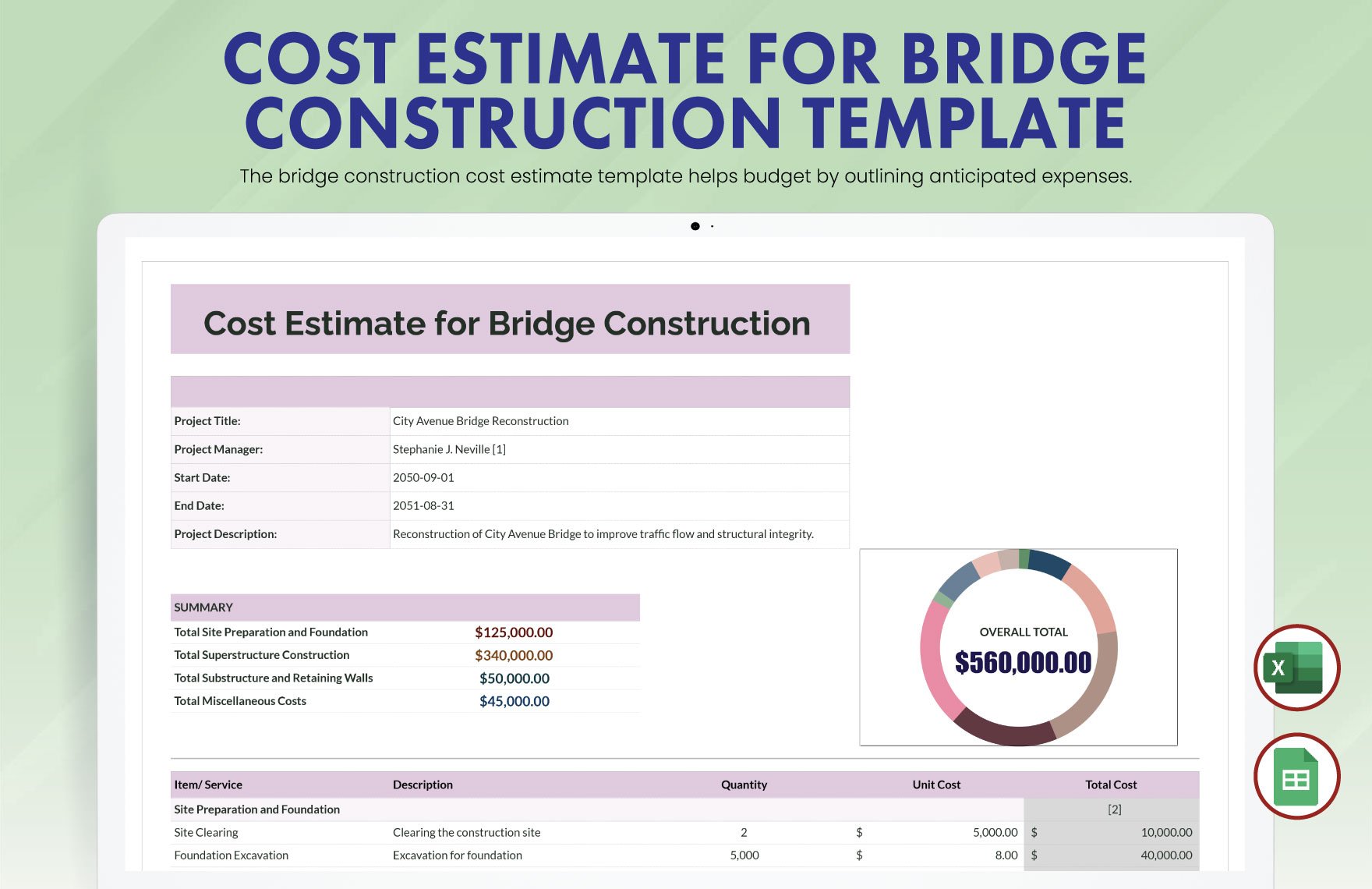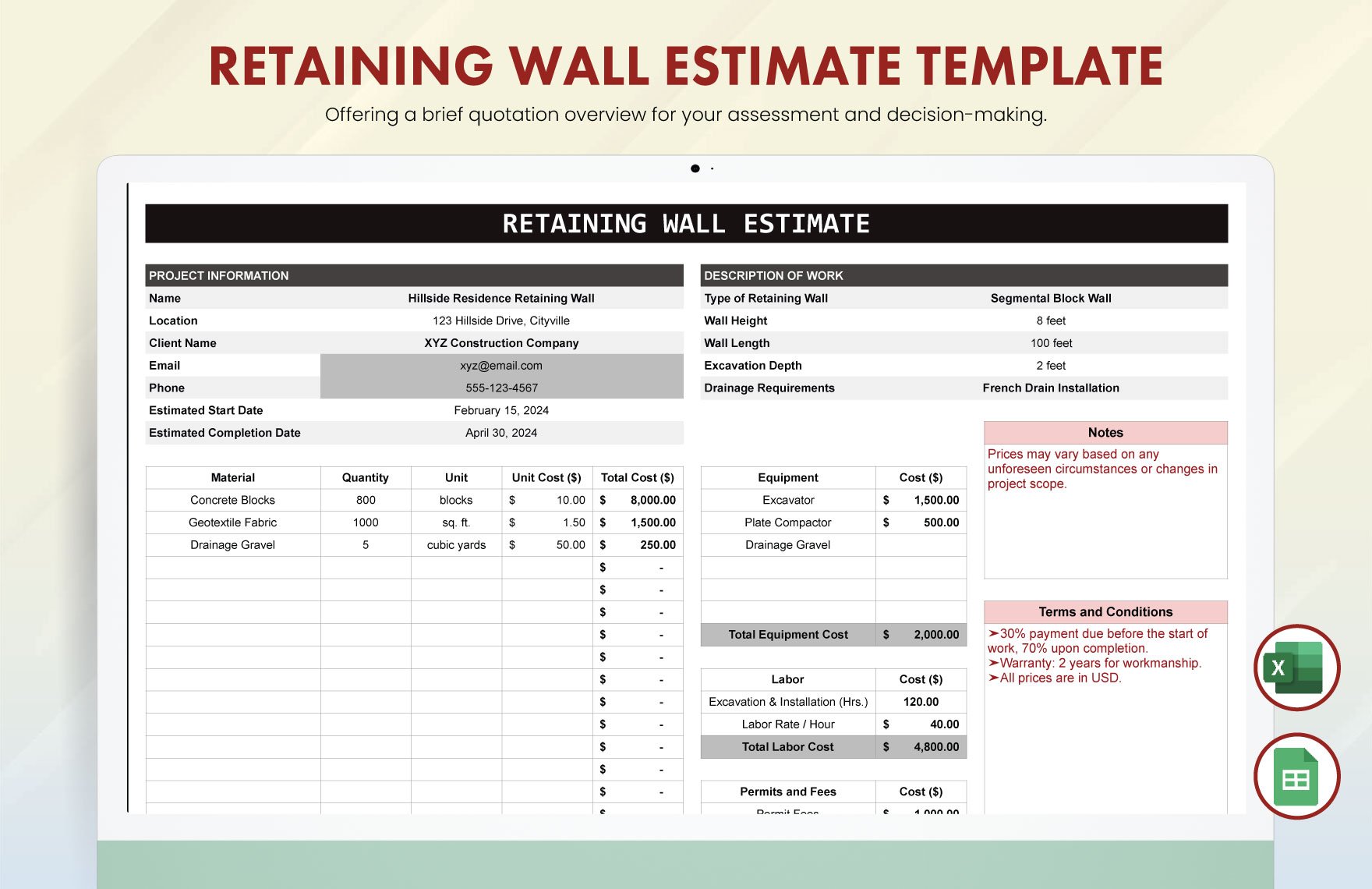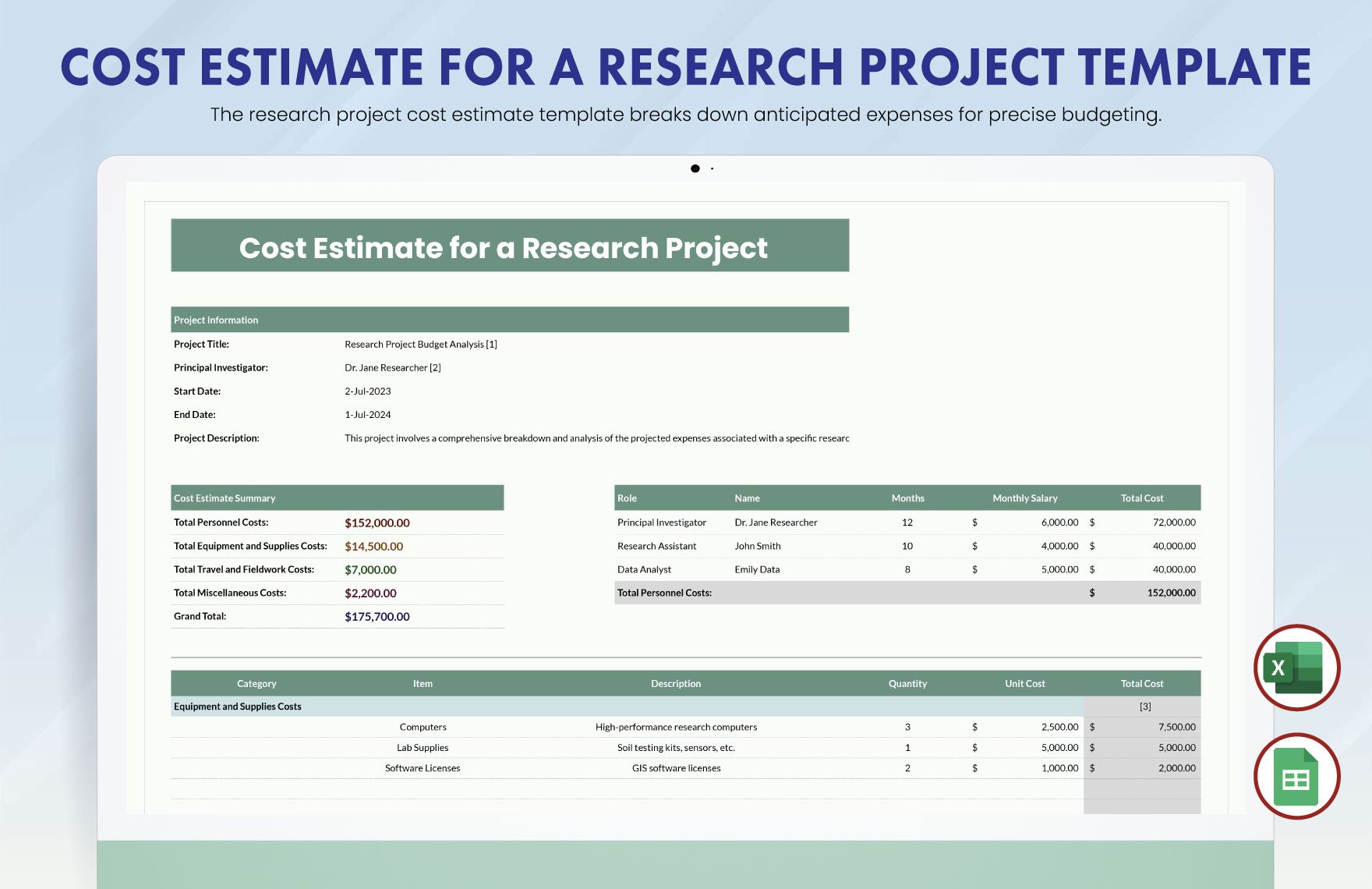Bring Your Project Planning to Life with Cost Estimate Templates from Template.net
Keep your construction or project management team engaged, accurately forecast expenses, and simplify budget allocations with Cost Estimate Templates from Template.net. Designed for project managers and business professionals, these templates enable you to promote transparent financial planning and invite stakeholder confidence. Whether you're preparing for a large-scale construction project or planning an office renovation, these templates are perfect for compiling comprehensive financial estimates. Each template includes crucial columns for resources, labor, and time estimates, ensuring precision in your planning. The templates are developed with ease of use in mind—no advanced spreadsheet skills are required. Customize your templates with professional-grade layouts that are suitable for both print and digital distribution.
Discover the many Cost Estimate Templates we have on hand that suit various project types and industries. Select a template that meets your needs, and effortlessly swap in your project data, tweak the colors and fonts to match your company branding. For a more dynamic presentation, take advantage of features like dragging-and-dropping icons for materials and labor, and add animated effects to highlight key figures. With AI-powered text tools, creating detailed and professional-looking cost estimates becomes a task free from skill barriers. Our template library is regularly updated to include new designs, ensuring you have fresh options to choose from. When you’re finished, download the template for immediate use, or share it effortlessly via email or a direct link to your stakeholders.
